33 Wild Animals in Spain [Wildlife in Spain]
Want to know more about the wildlife in Spain?
Discover 33 wild animals in Spain in this post, as well as interesting facts about them. 🇪🇸
Learn All About Spanish Animals
Ready to learn all about Spanish animals?
I’ve always been fascinated by animals, and by how they can be so different from one country to another. In this guide, we’ll focus on the many animals Spain has on the land, in the sky, and underwater.
I’ve split the guide into 4 categories:
- Native animals from Spain
- Endangered animals of Spain
- What is the official animal of Spain?
- How many animals native to Spain?
Let’s dive in right away with our first category!
Native Animals from Spain
Spain is a European country located in the southwestern part of the continent, between the Mediterranean Sea and the Atlantic Ocean. It has been inhabited for about 42,000 years, used to be one of the main overseas empires in history, and has influenced the entire world with its language, culture, music, art, literature, and cuisine. It is bordered by France, Andorra, Gibraltar, and Portugal, and its capital and largest city is Madrid, which counts more than 3,223,000 inhabitants (but more than 6,791,000 if you include the metropolitan area).
An interesting part of the country that I wanted to tackle is its wildlife. In light of that, I have listed the best of it, and I hope you will love learning what animals live in Spain.
Here’s the Spain animals list.
1. Iberian ibex
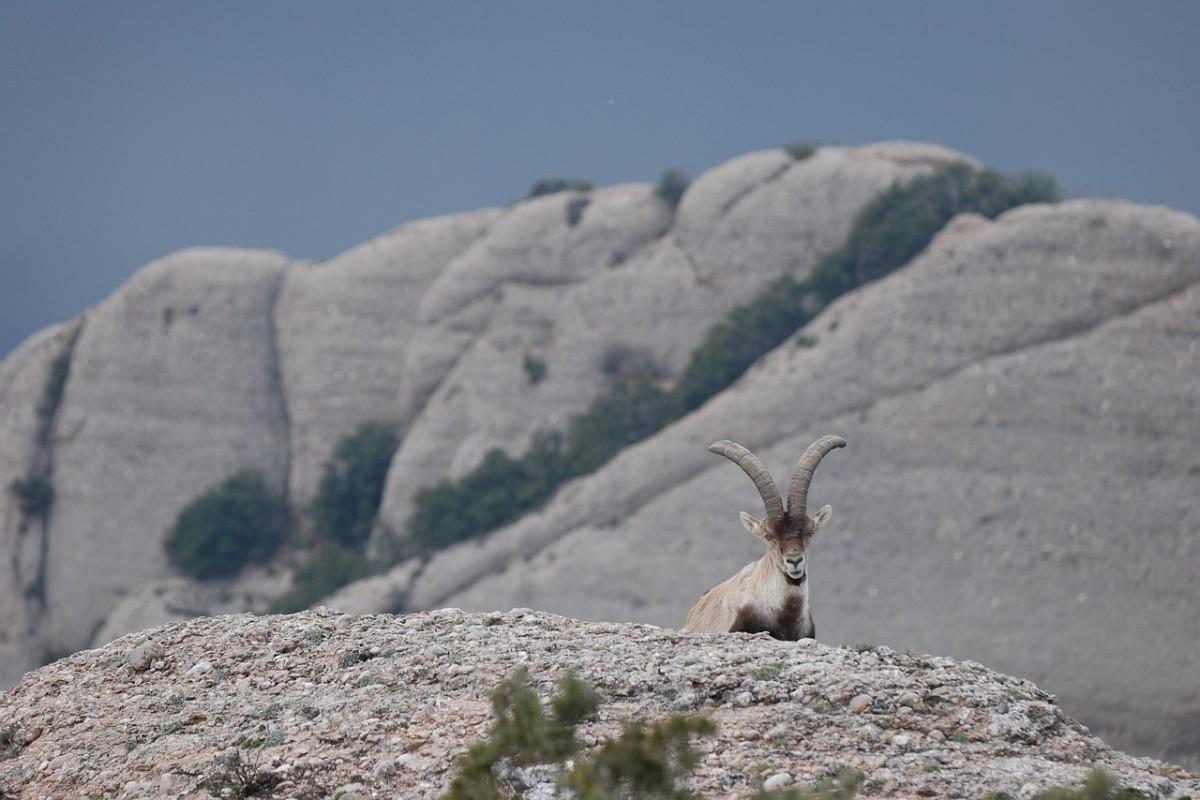
- Name: Iberian ibex
- Scientific name: Capra pyrenaica
- Conservation status:
The Iberian ibex, also known as the Iberian wild goat, the Spanish ibex, or the Spanish wild goat, is a species of ibex endemic to the Iberian Peninsula. It is further divided into 4 subspecies, 2 of which are already extinct: the Portuguese ibex and the Pyrenean ibex.
Technically speaking, the Pyrenean ibex is the first animal ever to reverse its extinct status, after being cloned in 2003. However, the clone died a few minutes after its birth, and the species remains extinct.
2. Iberian lynx
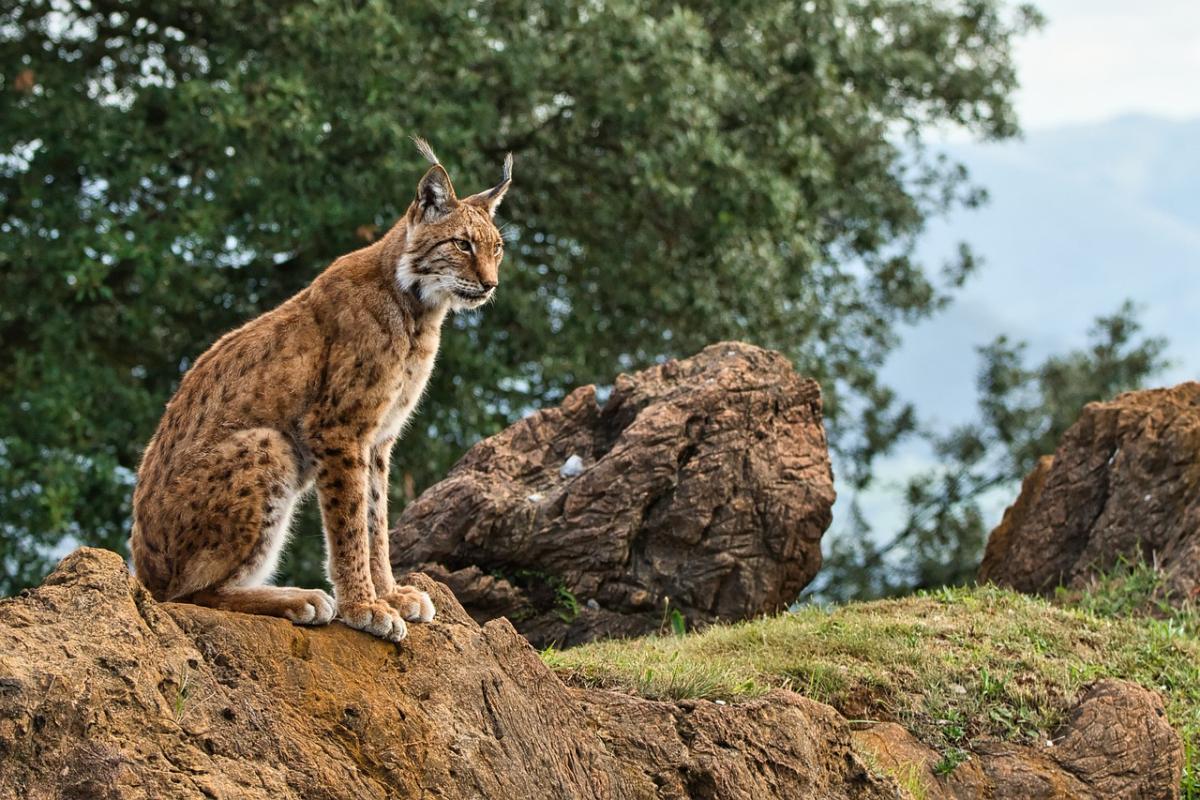
- Name: Iberian lynx
- Scientific name: Lynx pardinus
- Conservation status:
The Iberian lynx is a medium-sized species of wild cat endemic to the Iberian Peninsula. Its population started declining during the 20th century, primarily due to overhunting, habitat fragmentation, poaching, and depletion of prey.
This lynx was on the verge of extinction at the turn of the 21st century, with only fewer than 100 individuals remaining, but conservation measures and close monitoring helped it recover, and there are now more than 1,100 Iberian lynxes in the wild.
3. Brown bear
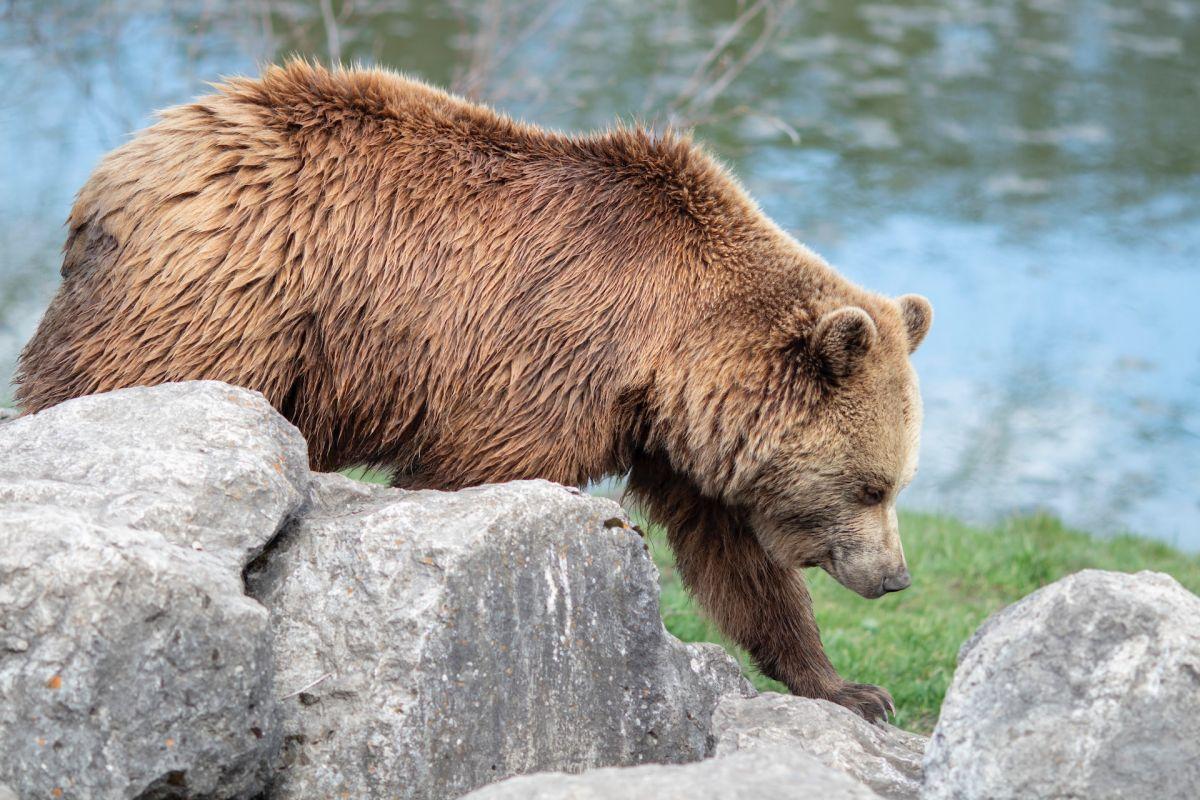
- Name: Brown bear
- Scientific name: Ursus arctos
- Conservation status:
The brown bear is a large species of bear native to much of Eurasia. It is one of the most well-known large animals in Europe, and there are very few of them in Spain (only about 20 to 25 in the northern mountain range of the Pyrenees, shared with Andorra and France).
This bear is one of the largest terrestrial carnivores in the world, only rivaled by its close relative, the polar bear. It inhabits various areas, from sea level to an altitude of 5,000 m / 16,000 ft, and usually prefers semi-open country.
4. Eurasian otter
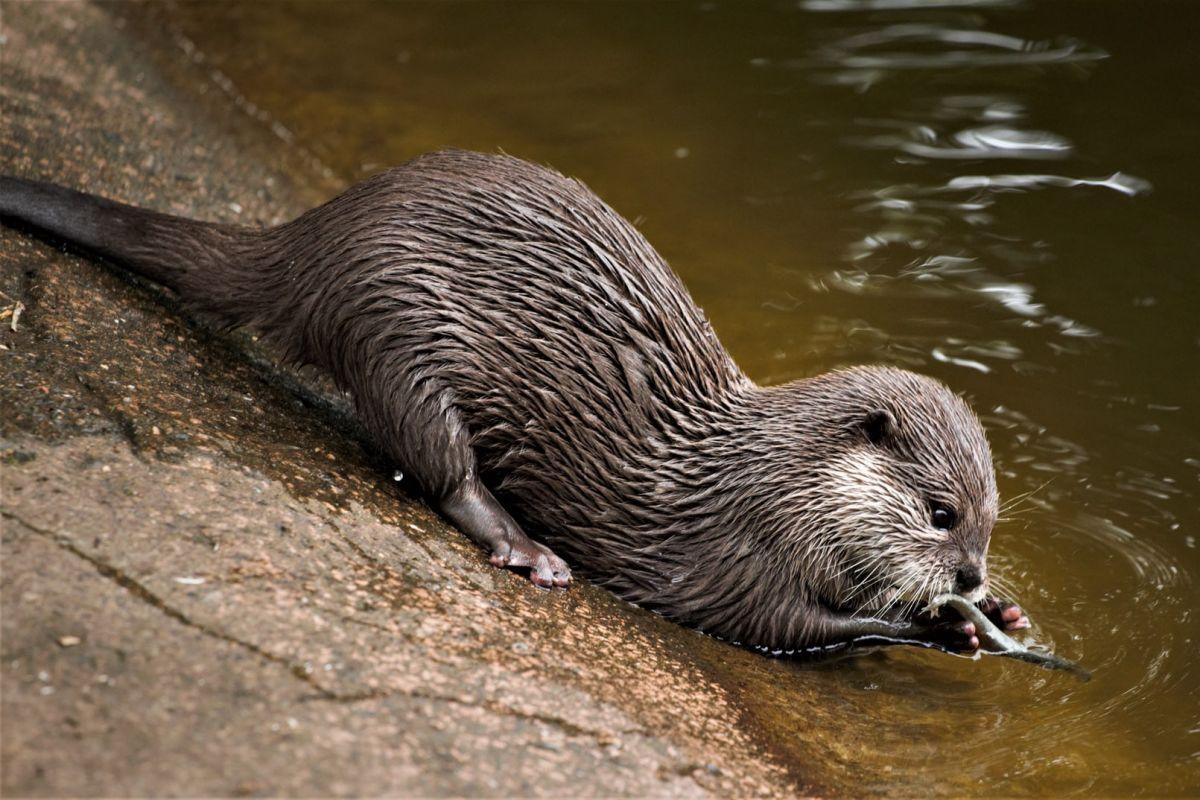
- Name: Eurasian otter
- Scientific name: Lutra lutra
- Conservation status:
The Eurasian otter, also known as the river otter, the Old World otter, or the common otter, is a species of semi-aquatic mammal with a very wide distribution: it can be found from northwestern Africa and the Iberian Peninsula in the west to the Russian Far East and the Indian subcontinent and Indonesia in the south.
This otter is pretty common in the western regions of Spain, where it lives in unpolluted bodies of water such as rivers, streams, lakes, ponds, and canals.
5. Griffon vulture
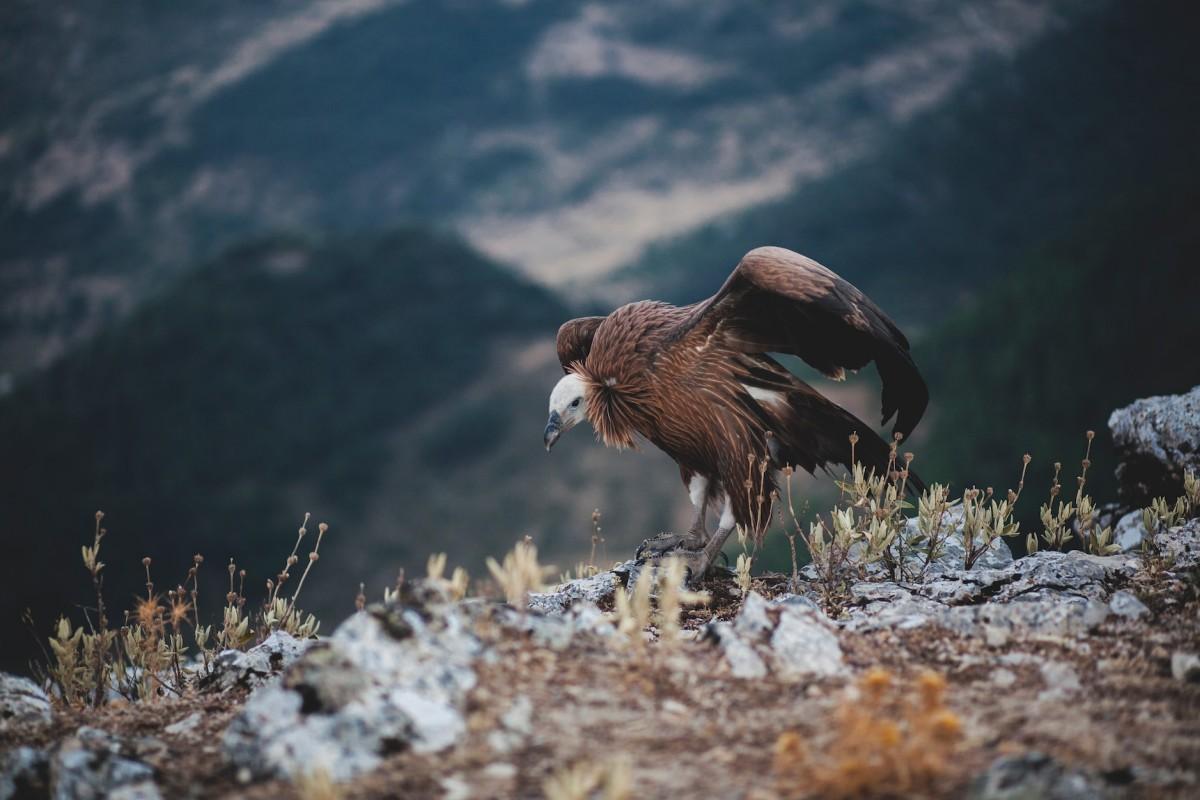
- Name: Griffon vulture
- Scientific name: Gyps fulvus
- Conservation status:
The griffon vulture, also known as the Eurasian griffon, is a large species of Old World vulture found in southwestern Europe, northern Africa, the Middle East, western and southern Asia, and the Arabian Peninsula. It is a scavenger that feeds on carcasses found by soaring over open areas, usually in flocks.
Spain has the largest colony of griffon vultures in all of Europe, and there are about 25,000 birds in the country and in France.
6. Ocellated lizard
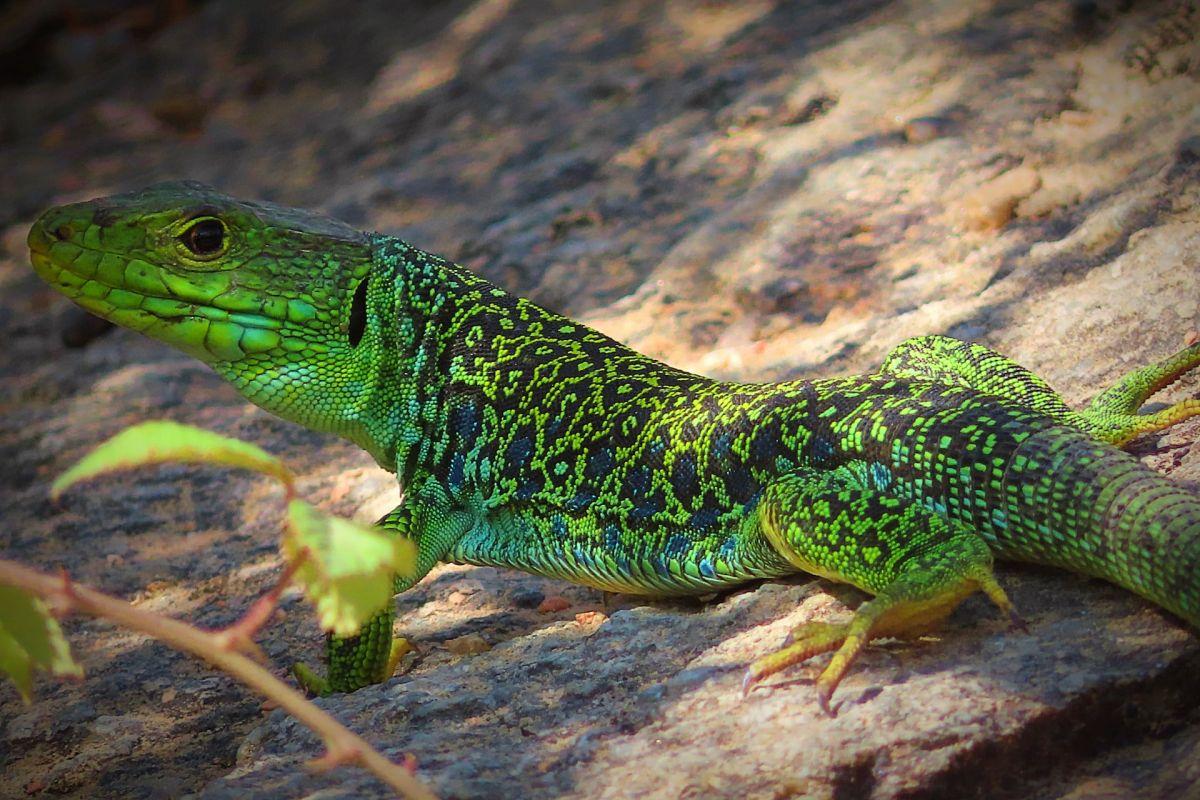
- Name: Ocellated lizard
- Scientific name: Timon lepidus
- Conservation status:
The ocellated lizard, also known as the jeweled lizard, is a species of wall lizard endemic to southwestern Europe. It can be found all around the Iberian Peninsula, but also in southern France and northwestern Italy. It inhabits the cultivated and wild areas of Spain, at altitudes of up to 2,100 m / 6,900 ft.
Since 2011, the capture and trade of the ocellated lizard is forbidden in Spain, where the species is under strict protection.
7. Pyrenean chamois
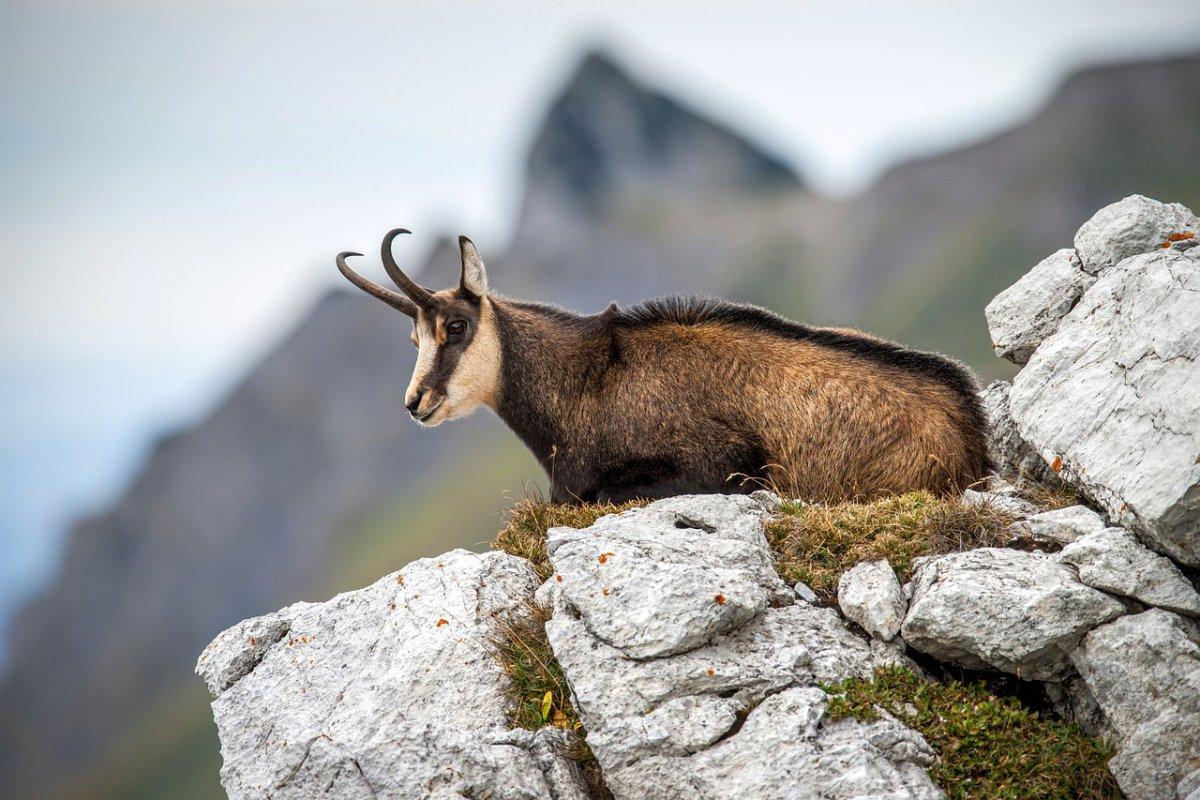
- Name: Pyrenean chamois
- Scientific name: Rupicapra pyrenaica
- Conservation status:
The Pyrenean chamois is a subspecies of the chamois, a goat-antelope native to much of the European mountain ranges. This subspecies can be found in the Pyrenees, as its name implies, but also, quite surprisingly, in the Cantabrian Mountains and the Apennine Mountains of Italy.
Similarly to other species of chamois, the Pyrenean chamois was hunted to near extinction during the 1940s, mainly for the production of chamois leather. Thanks to conservation efforts, its population has since recovered, and there are now about 25,000 individuals in the wild.
8. Pyrenean desman
- Name: Pyrenean desman
- Scientific name: Galemys pyrenaicus
- Conservation status:
The Pyrenean desman, also known as the Iberian desman, is a small species of semi-aquatic mammal native to the northeastern and northwestern parts of the Iberian Peninsula. It is closely related to voles and moles and is globally threatened by habitat alteration and fragmentation, climate change, and invasive species such as the American mink.
This mammal is an adept swimmer and usually lives in an aquatic habitat. It is also good at climbing thanks to its claws, and usually inhabits fast-flowing mountainous rivers with shallow waters.
9. American mink
- Name: American mink
- Scientific name: Neogale vison
- Conservation status:
Speaking of the main predator of the Pyrenean desman, there it is! The American mink is a semi-aquatic species of mustelid native to North America, and introduced to many other areas in the world, including Spain, northern Europe, the southern tip of South America, and western and eastern Asia.
This mink is carnivorous, and it feeds on fish rodents, frogs, birds, and crustaceans. It is considered an invasive species in much of its range in Europe, wreaking havoc on European mink and water vole populations.
10. European hedgehog
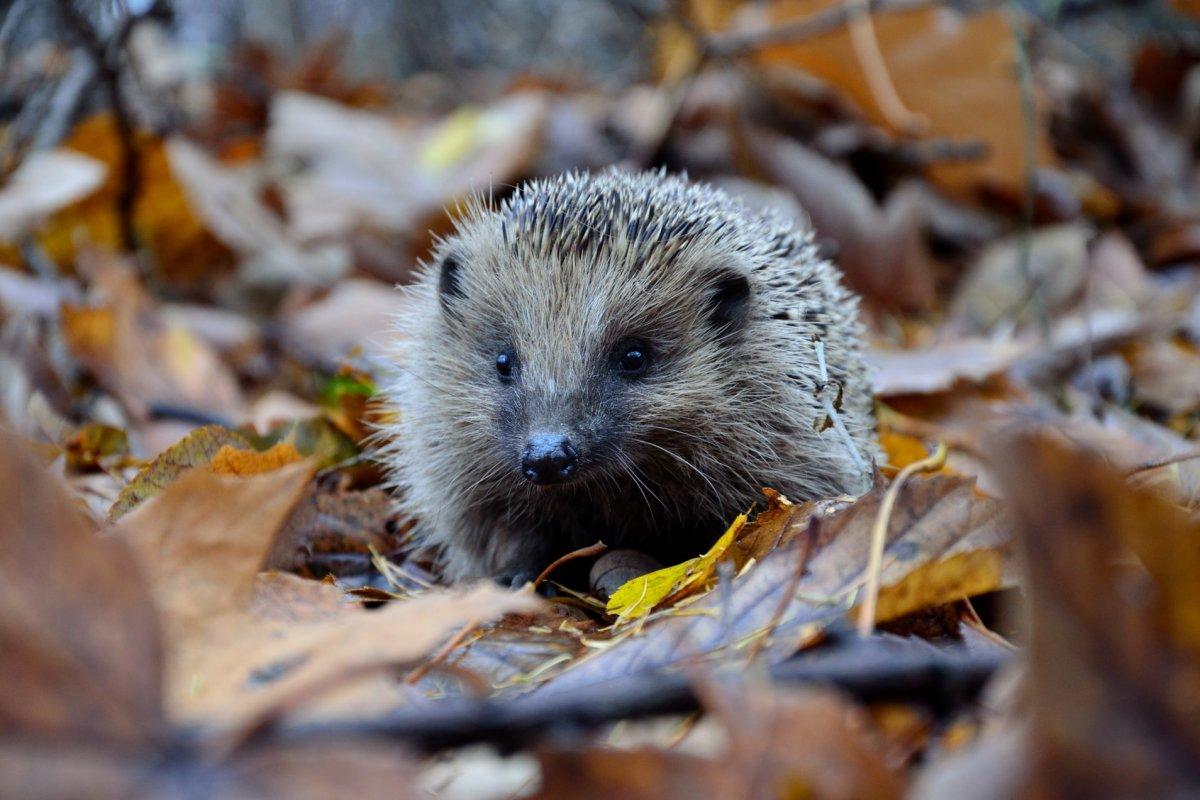
- Name: European hedgehog
- Scientific name: Erinaceus europaeus
- Conservation status:
The European hedgehog, also known as the common hedgehog or the West European hedgehog, is a species of hedgehog native to almost all of Europe and introduced in New Zealand. It is generally appreciated by Europeans, being commonly seen in their gardens, inoffensive, and a great countermeasure to a wide range of garden pests.
This hedgehog, due to its pacific behavior, is considered the unofficial symbol of NATO, and it has a wide range with a large, stable population.
11. Iberian wolf
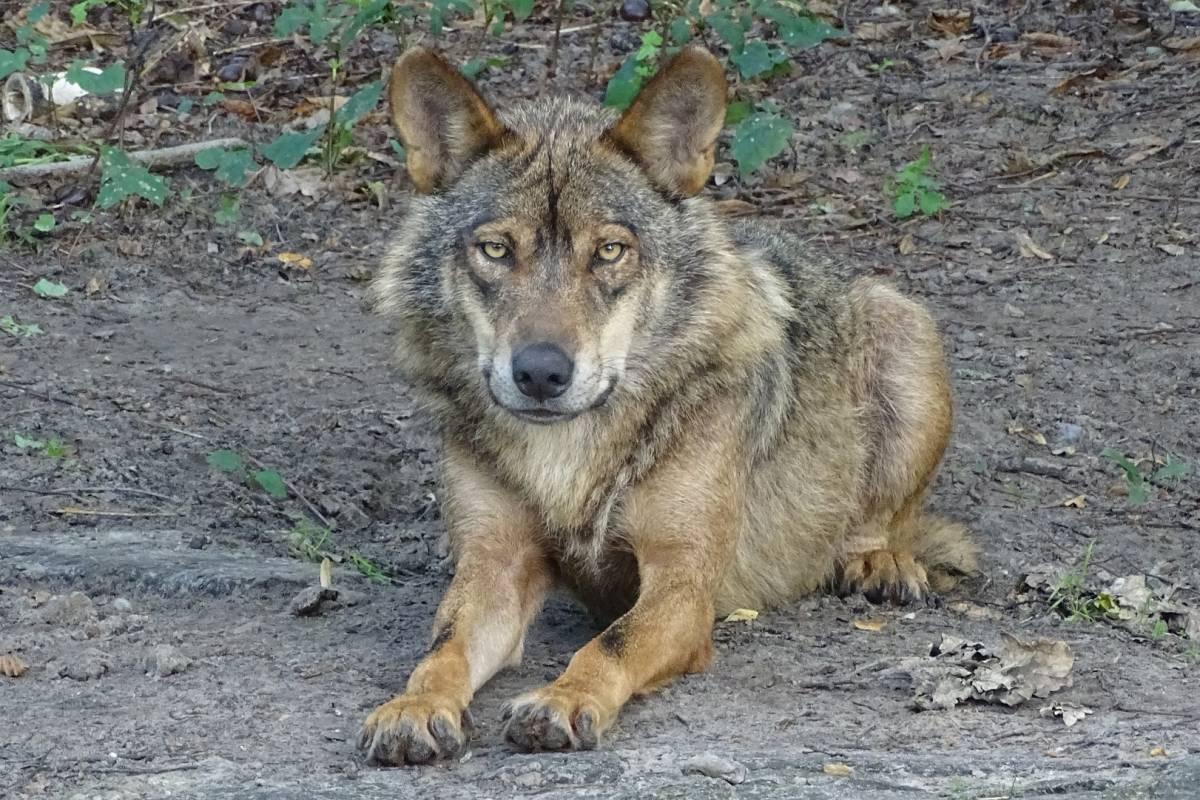
- Name: Iberian wolf
- Scientific name: Canis lupus signatus
- Conservation status:
The Iberian wolf is a subspecies of the gray wolf endemic to the northwestern and southern areas of the Iberian Peninsula. There are about 2,200 to 2,700 individuals left, all isolated from mixing with other wolves for more than a century.
In Spain, it is still legal to hunt the Iberian wolf. It is locally known as an important livestock raider, and its population sometimes needs to be controlled.
12. Alpine marmot
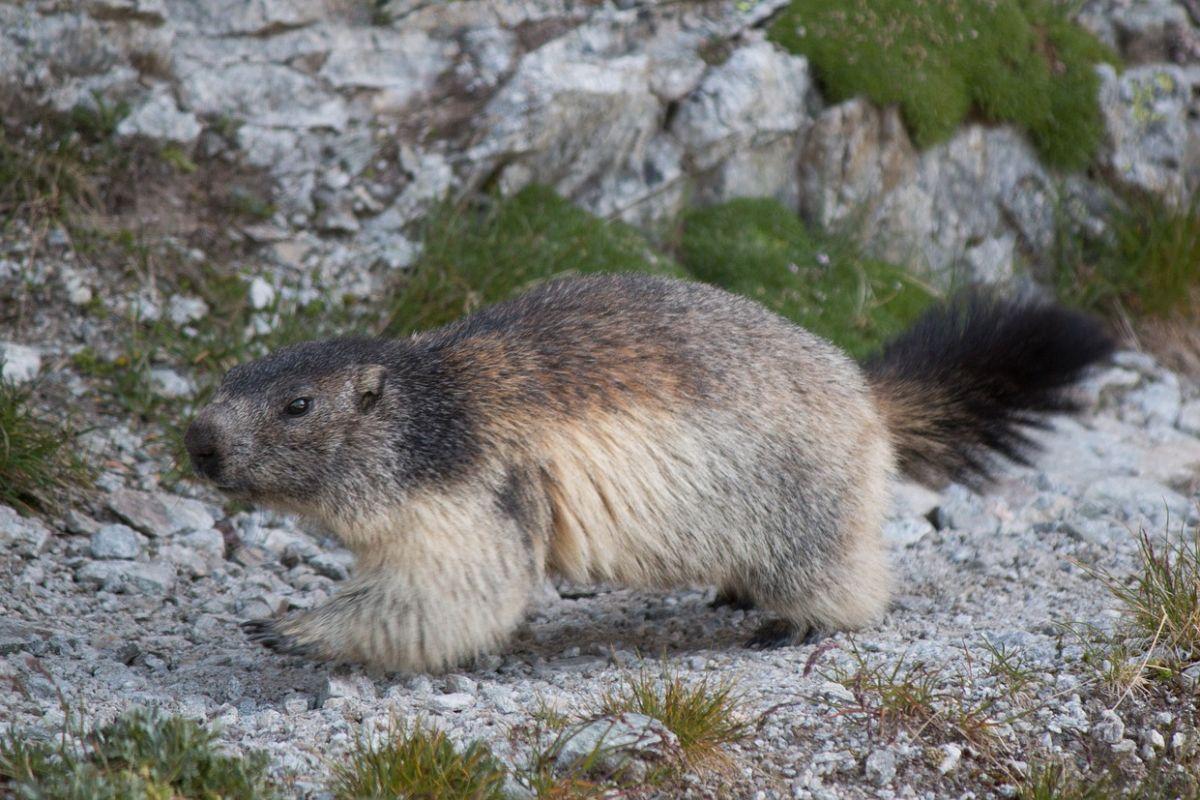
- Name: Alpine marmot
- Scientific name: Marmota marmota
- Conservation status:
The alpine marmot is a large species of squirrel native to the mountainous areas of central and southern Europe. In Spain, it can be found in the Pyrenees mountain range, at elevations between 800 and 3,200 m / 2,600 and 10,500 ft.
In fact, this marmot had disappeared from the Pyrenees at the end of the Pleistocene era but was reintroduced in 1948, and it is now thriving.
13. Hermann’s tortoise
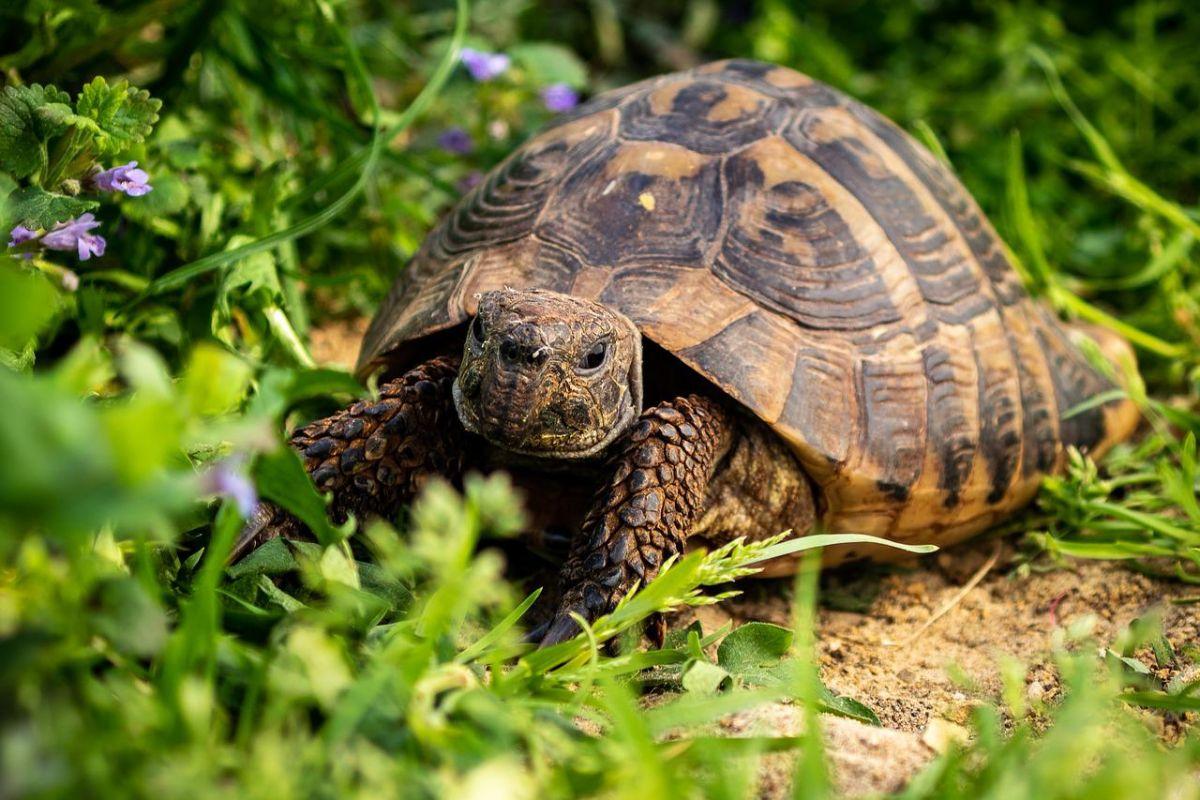
- Name: Hermann’s tortoise
- Scientific name: Testudo hermanni
- Conservation status:
Hermann’s tortoise is a small- to medium-sized species of tortoise native to southern Europe. It can primarily be found in Greece, Croatia, and Italy, but also in eastern mainland Spain and on the Balearic Islands.
This animal is active in the early morning. It hides in hollows behind hedges or thick bushes during the night and spends most of its time basking in the sun and warming its body.
14. European badger
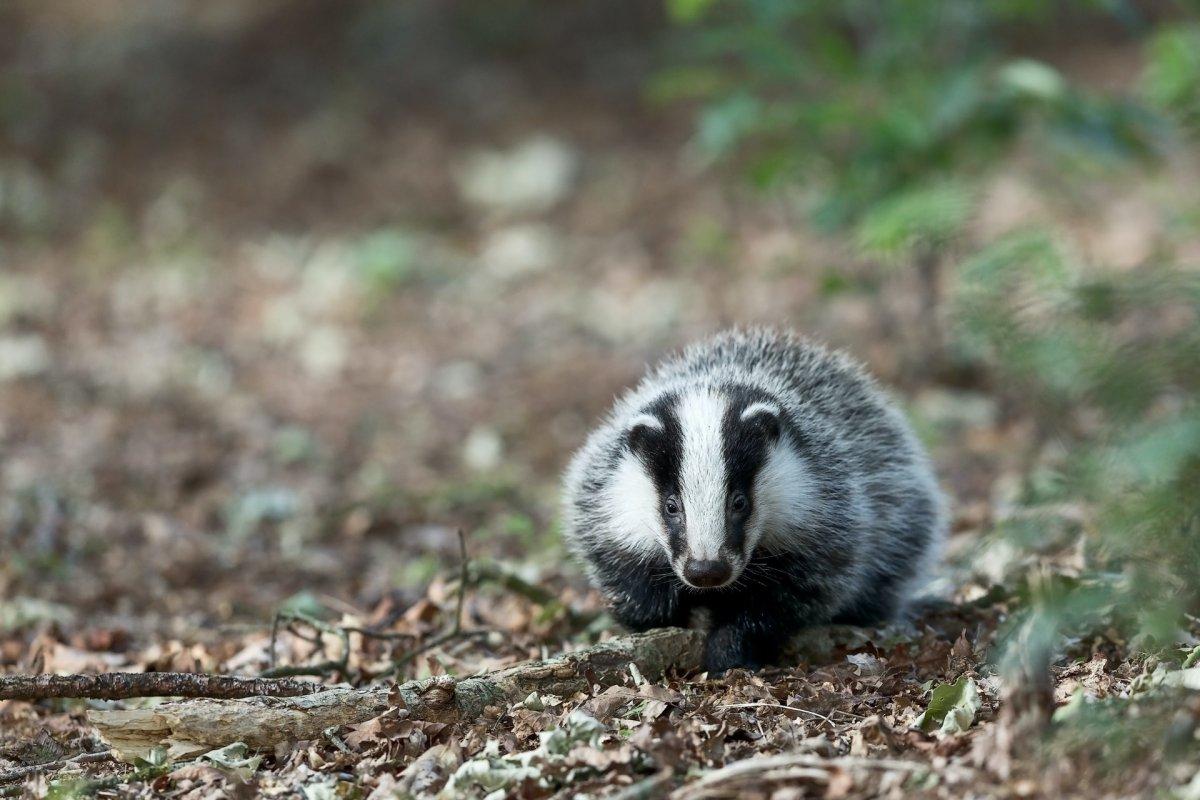
- Name: European badger
- Scientific name: Meles meles
- Conservation status:
The European badger is a species of mustelid found throughout almost all of Europe, except for some insular areas and northernmost Scandinavia. It is powerfully built, is black, white, and gray, and is particularly ferocious for its size.
This badger inhabits the mixed and deciduous woodlands of Spain, as well as its pastureland, clearing, and Mediterranean maquis shrublands. It is a highly adaptable and opportunistic omnivore that can feed on practically anything within its range, from cereals to carrion.
15. Common crane
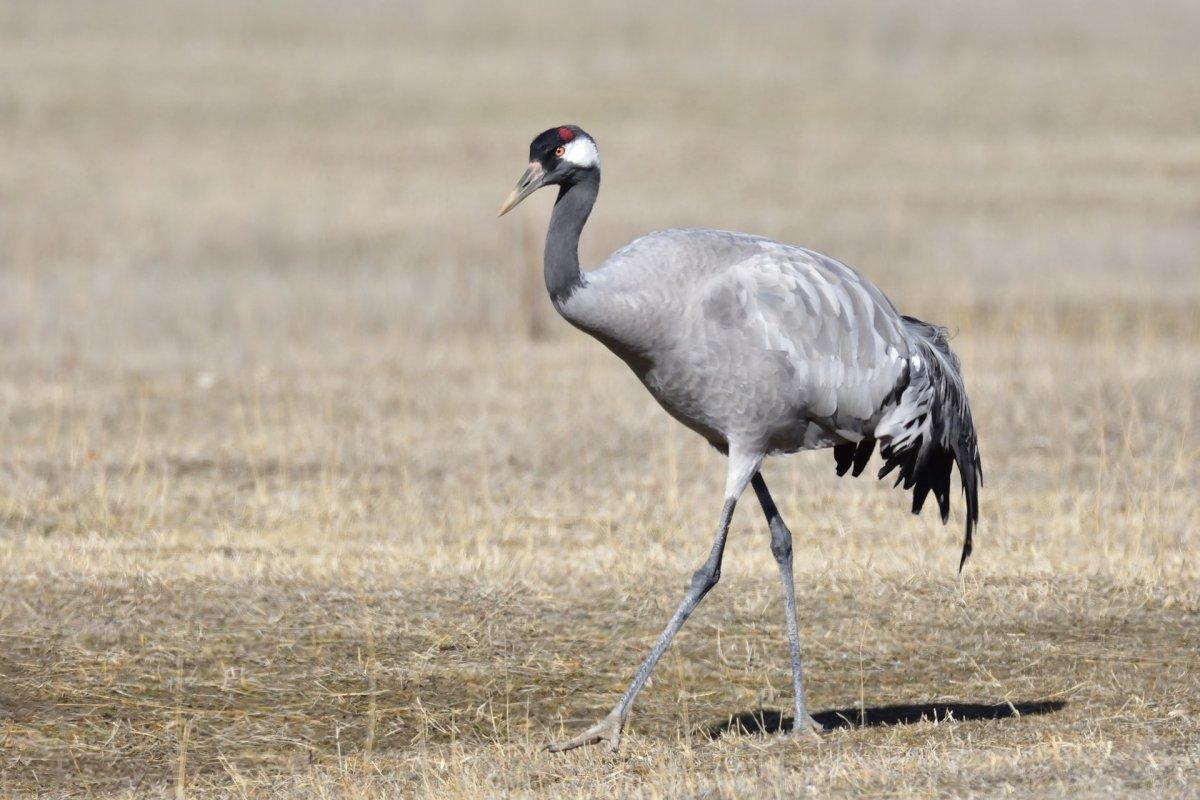
- Name: Common crane
- Scientific name: Grus grus
- Conservation status:
The common crane, also known as the Eurasian crane, is a species of crane native to Europe, Asia, and Africa. It is a migratory bird with a range going from Siberia in the north to the Indian subcontinent and northeastern Africa in the south. In Spain and other warmer countries, it spends the winter, before going back to the northernmost parts of the Eurasian continent.
This bird is very common in Spain, as several thousands of individuals spend the winter on the peninsula.
16. Common genet
- Name: Common genet
- Scientific name: Genetta genetta
- Conservation status:
The common genet is a small species of viverrid native to sub-Saharan Africa and the Iberian Peninsula and introduced to southwestern France and the Iberian Peninsula. Thanks to its very wide range and large, stable numbers, the common genet is considered of least concern.
This viverrid has a cat-like body, with a very long ringed tail. Its population in Manzanares Park in central Spain lives at altitudes between 1,000 and 1,200 m / 3,300 and 3,900 ft, and inhabits rocky and shrub areas.
17. European bison
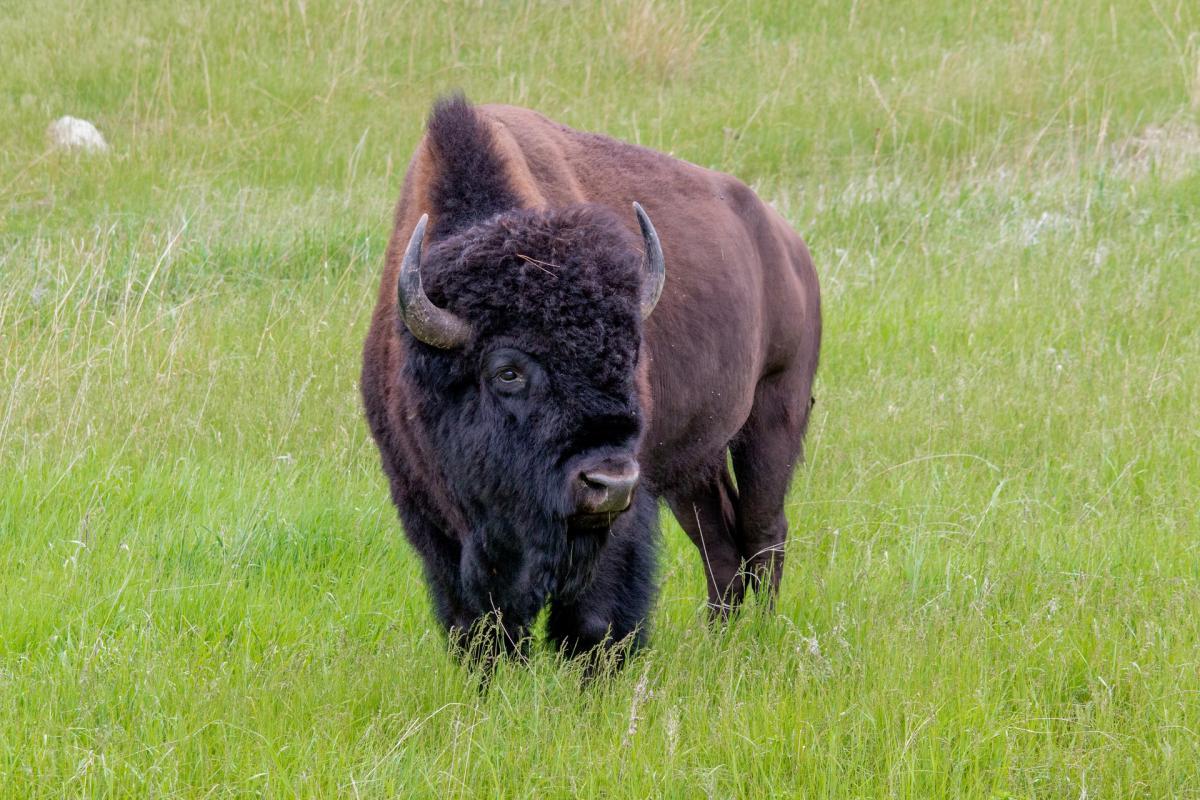
- Name: European bison
- Scientific name: Bison bonasus
- Conservation status:
The European bison, also known as the European buffalo, the zubr, the wisent, or the European wood bison, is a large species of bison native to Europe. It is the heaviest terrestrial animal in the continent and became extinct during much of its range, but surviving only in northern-central Europe.
Over time, it has been reintroduced to more and more countries, but it still remains near threatened with extinction.
18. Egyptian mongoose
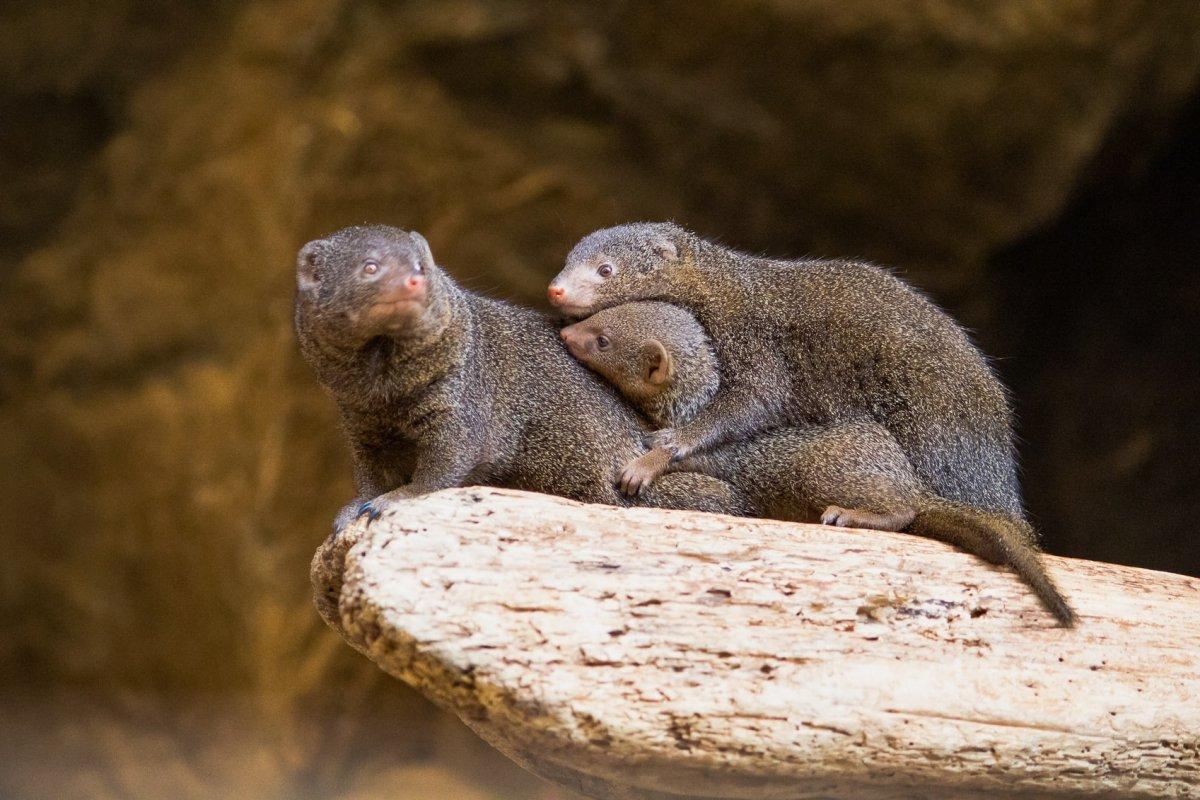
- Name: Egyptian mongoose
- Scientific name: Herpestes ichneumon
- Conservation status:
The Egyptian mongoose, also known as the ichneumon, is a species of mongoose native to Egypt, but also much of sub-Saharan Africa. It is not quite certain whether it has been introduced or is native to the Iberian Peninsula, but it is definitely present in southwestern Spain and Portugal.
One of the theories suggested by archeologists and scientists would be that this animal had been introduced during the Roman Hispania era to eliminate mice and rats in domestic areas.
19. Fin whale
- Name: Fin whale
- Scientific name: Balaenoptera physalus
- Conservation status:
The fin whale, also known as the common rorqual or the finback whale, is a species of cetacean native to all the major oceans, from polar to tropical waters. It is the second-largest animal on the planet after the blue whale, reaching incredible lengths of up to 27.3 m / 89 ft and weights of up to 114 tonnes / 126 short tons.
It can be seen off the strait of Gibraltar and has a long, slender body.
20. Common dolphin
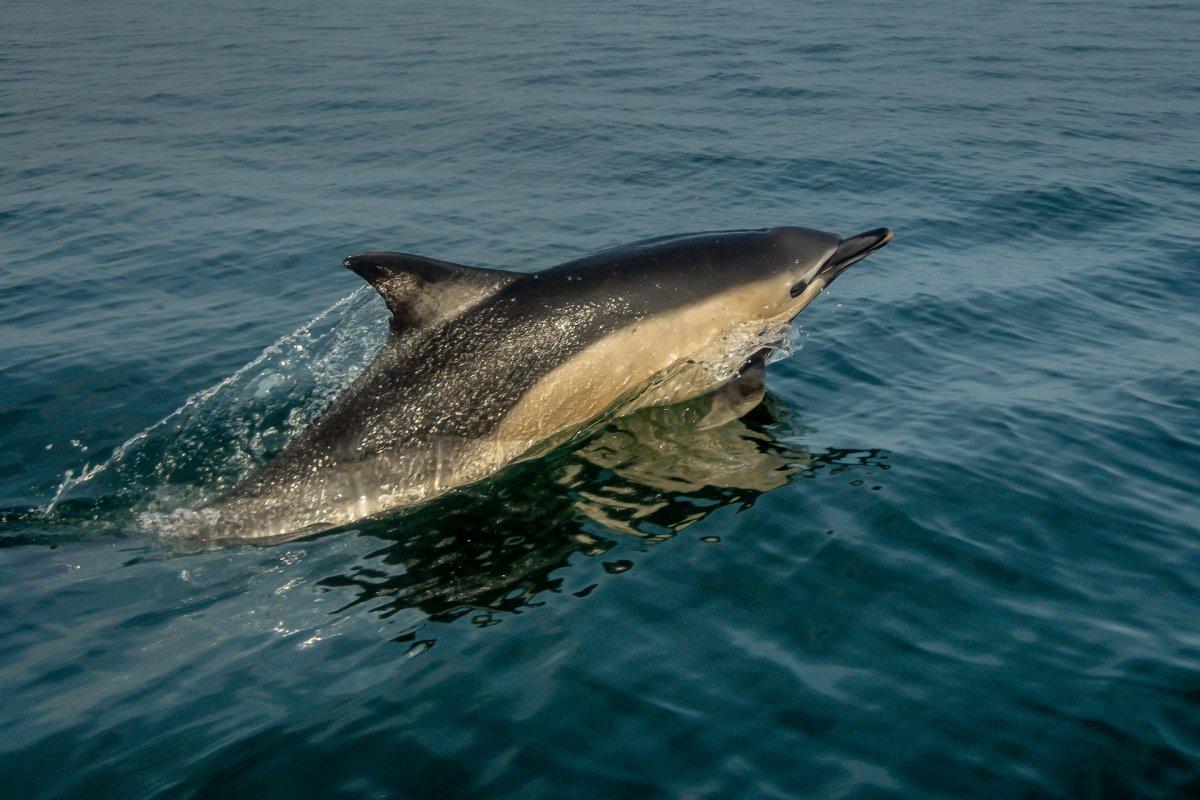
- Name: Common dolphin
- Scientific name: Delphinus delphis
- Conservation status:
The common dolphin is a species of cetacean spread throughout the temperate coastlines of the world. It is the most common cetacean, with numbers reaching around 6 million, but is not the most commonly seen species of dolphin in the media, that role being reserved for the more acrobatic spinner dolphin.
One of the main threats the common dolphin is facing is accidental bycatch, and this is a serious problem in Galicia Spain. Because of this, several hundred of individuals are killed each year in the region.
21. Booted eagle
- Name: Booted eagle
- Scientific name: Hieraaetus pennatus
- Conservation status:
The booted eagle is a medium-sized species of bird native to Europe, western, central, and southern Asia, the Arabian Peninsula, and sub-Saharan Africa. It is a migratory bird of prey that spends the winter in southern regions and flies as far north as Russia during the summer.
This eagle usually builds its nest built from sticks on a crag or in a tree and lays 1 to 2 eggs there.
22. Leatherback sea turtle
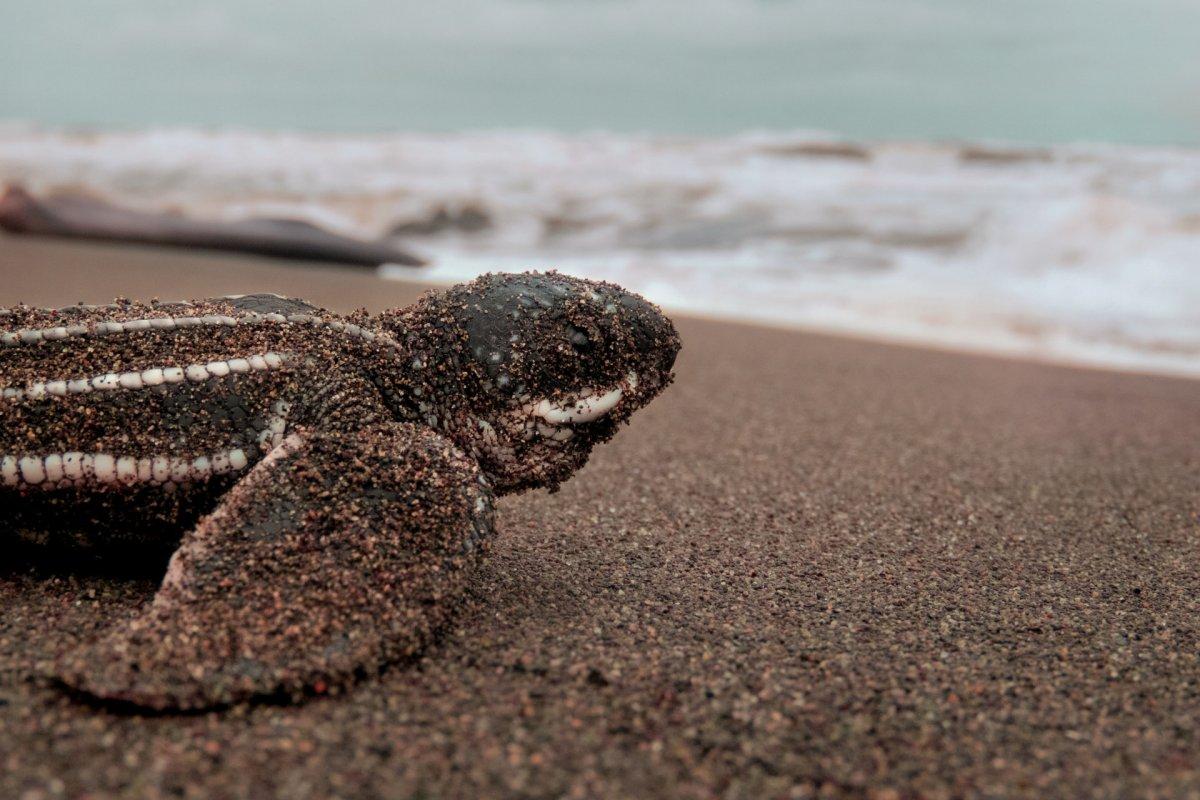
- Name: Leatherback sea turtle
- Scientific name: Dermochelys coriacea
- Conservation status:
The leatherback sea turtle, also known as the leathery turtle, the lute turtle, or simply the luth, is the largest species of turtle in the world, and the heaviest non-crocodile reptile. It is an animal of all records, with a maximum length of 1.8 m / 6 ft and a maximum weight of 500 kg / 1,100 lb!
This sea turtle is unique because of its carapace, which is not a bony shell, but rather a leather-like skin, from which it gets its name. While it is considered vulnerable to extinction on a global scale, it is listed as critically endangered in Spain, and only seldom visits its warm beaches.
23. Common chameleon
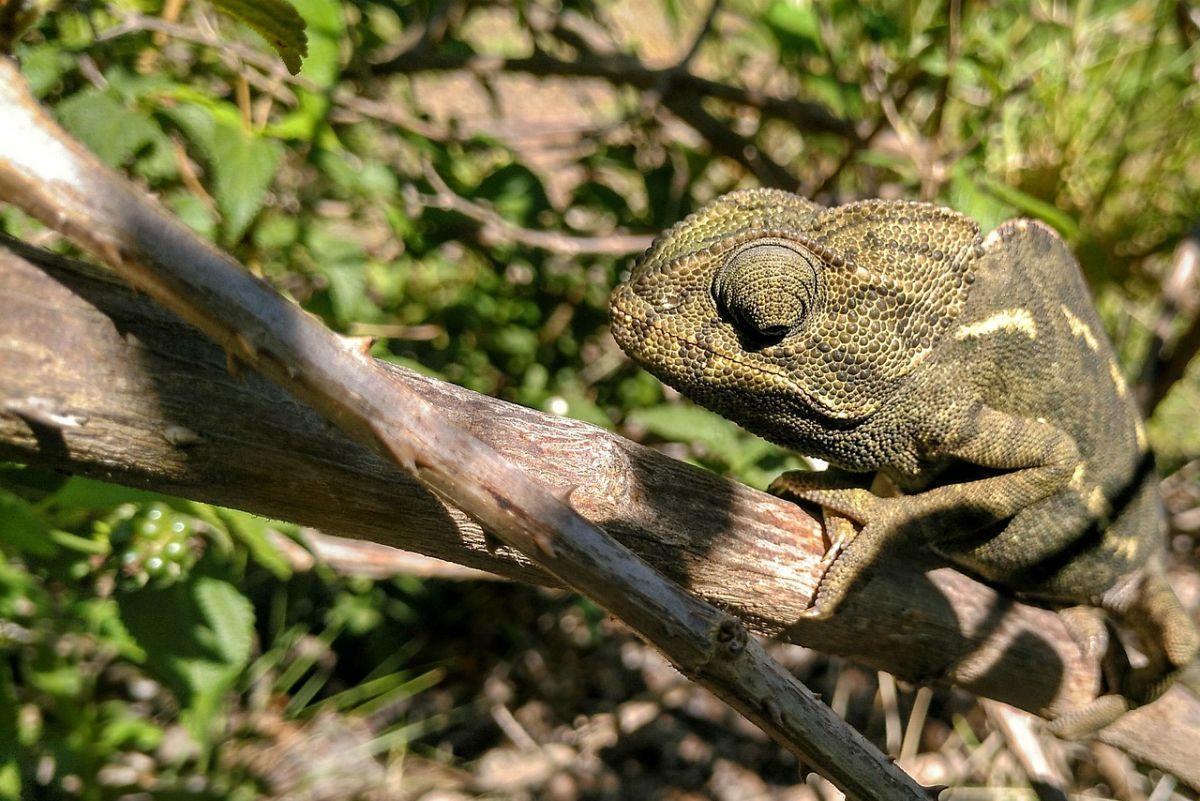
- Name: Common chameleon
- Scientific name: Chamaeleo chamaeleon
- Conservation status:
The common chameleon, also known as the Mediterranean chameleon, is a species of chameleon native to the Mediterranean Basin and the Red Sea. It is the only chameleon with a natural range in Europe, being found in southernmost Spain and Portugal.
This chameleon is insectivorous, and it rapidly extends its tongue to catch its prey. Because of its slow speed, it uses stealth to ambush bugs. It is known for eating other young chameleons.
24. Humpback whale
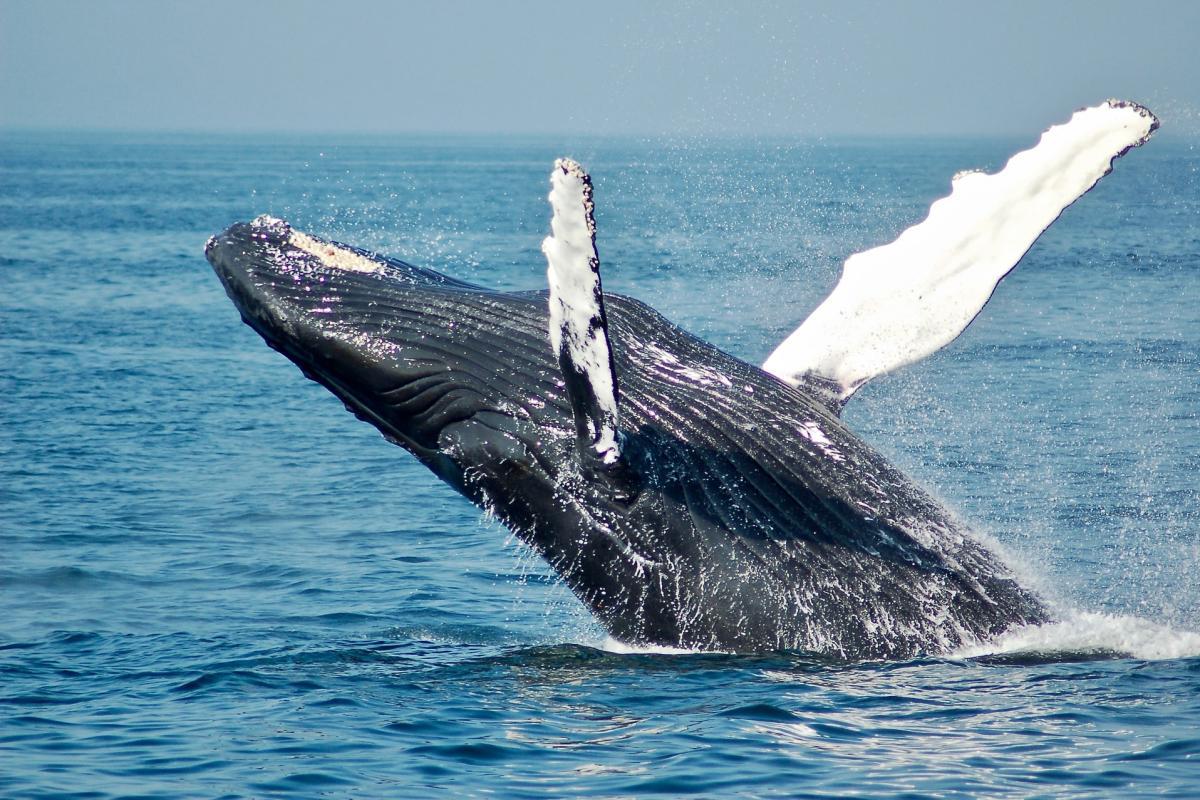
- Name: Humpback whale
- Scientific name: Megaptera novaeangliae
- Conservation status:
The humpback whale is a large species of baleen whale found throughout the oceans and seas of the world. It migrates up to 16,000 km / 9,900 mi each year, and is the most familiar whale to whale watchers, thanks to its tendency to stay near the surface, swim slowly, and often breach the surface.
The only natural predator of the humpback whale is the orca or killer whale. However, it was once hunted to near extinction and thankfully recovered from its population of about 5,000 during the 1960s.
25. Iberian worm lizard
- Name: Iberian worm lizard
- Scientific name: Blanus cinereus
- Conservation status:
The Iberian worm lizard, also known as the European worm lizard or the Mediterranean worm lizard, is a species of reptile native to the Iberian Peninsula. It inhabits a wide variety of Mediterranean habitats, and uses the depth of the soil for thermoregulation: depending on the time of the day, it will move more or less deep into the ground to cool down.
This worm lizard is an opportunistic feeder that eats insects and larvae.
26. Aesculapian snake
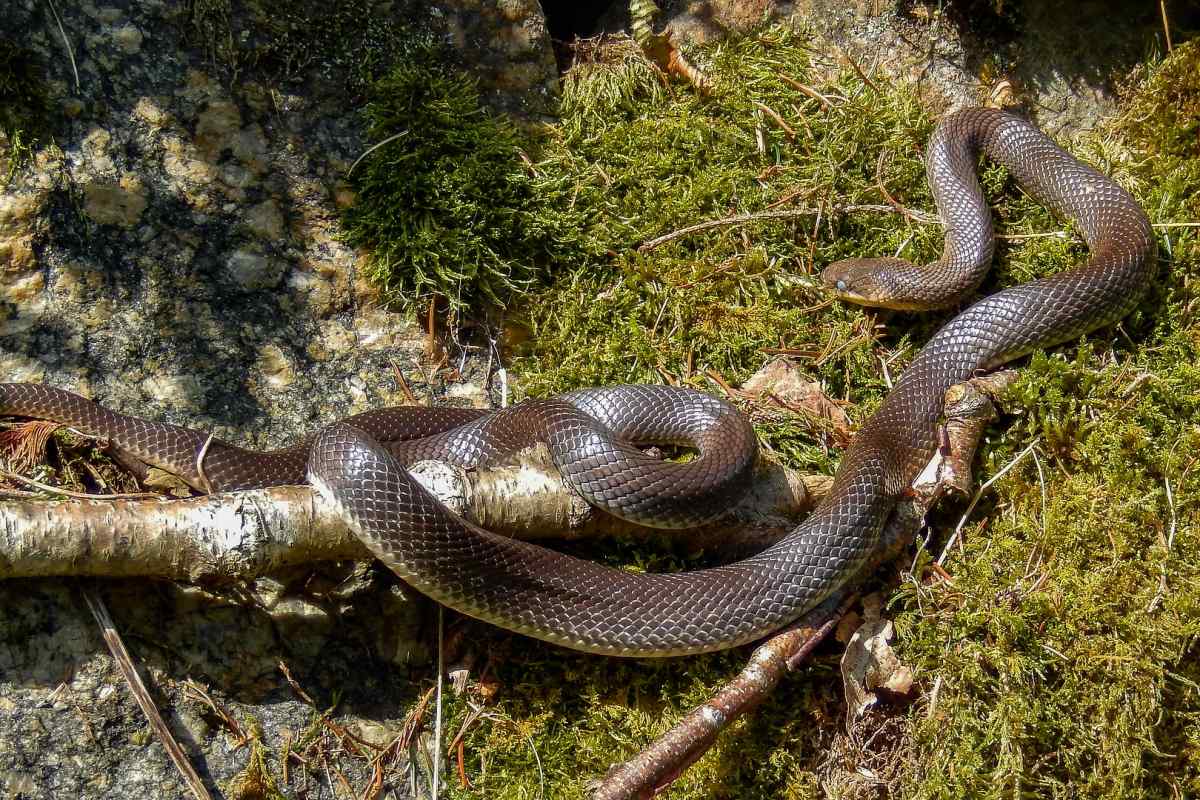
- Name: Aesculapian snake
- Scientific name: Zamenis longissimus
- Conservation status:
The Aesculapian snake is a species of non-venomous snake native to southern and southeastern Europe. It is one of the largest snakes in Europe and has long been of important cultural and historical significance, being the snake of Asclepius, the symbol of human medicine.
Although its numbers are quite large and its range is wide, the Aesculapian snake is on the decline because of climate change, human disturbance, and habitat loss.
27. Baskian viper
- Name: Baskian viper
- Scientific name: Vipera seoanei
- Conservation status:
The Baskian viper, also known as the Iberian cross adder, the Seoane’s viper, or the Portuguese viper, is a venomous species of viper endemic to extreme southwestern France, as well as northwestern Spain and northern Portugal.
This viper is under no threat whatsoever, having a wide range and a large population, as well as the unlikelihood of its rapid decline in the future. It is usually smaller than 75 cm / 30 in.t
28. Iberian eagle-owl
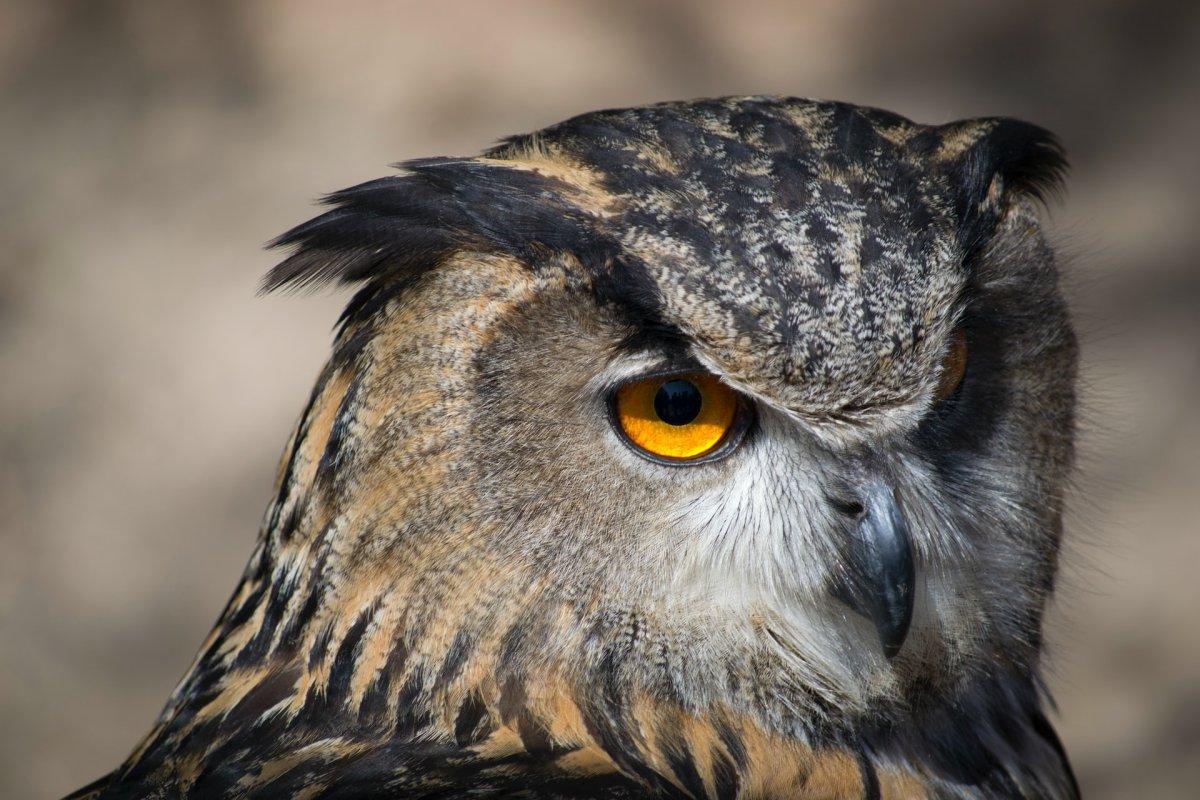
- Name: Iberian eagle-owl
- Scientific name: Bubo bubo hispanus
- Conservation status:
The Eurasian eagle-owl, also known as the Uhu or simply the eagle-owl, is a species of eagle-owl native to almost all of Eurasia. It is one of the largest owls in the world and has characteristic orange eyes.
The Iberian eagle owl, also known as the Spanish eagle owl, is the local subspecies. It occupies the majority of Spain and scattered areas in Portugal and is lighter and smaller than other subpopulations.
29. Mediterranean horseshoe bat
- Name: Mediterranean horseshoe bat
- Scientific name: Rhinolophus euryale
- Conservation status:
The Mediterranean horseshoe bat is a species of bat native to the Mediterranean region and the Balkan Peninsula. It is found all around the Iberian Peninsula and inhabits warm, wooded areas in mountains and foothills.
This bat often shares its roost with other bat species, and it leaves its colony (made of about 50 to 400 females) in late dusk in order to hunt low over the ground for moths and other small insects.
30. Iberian shrew
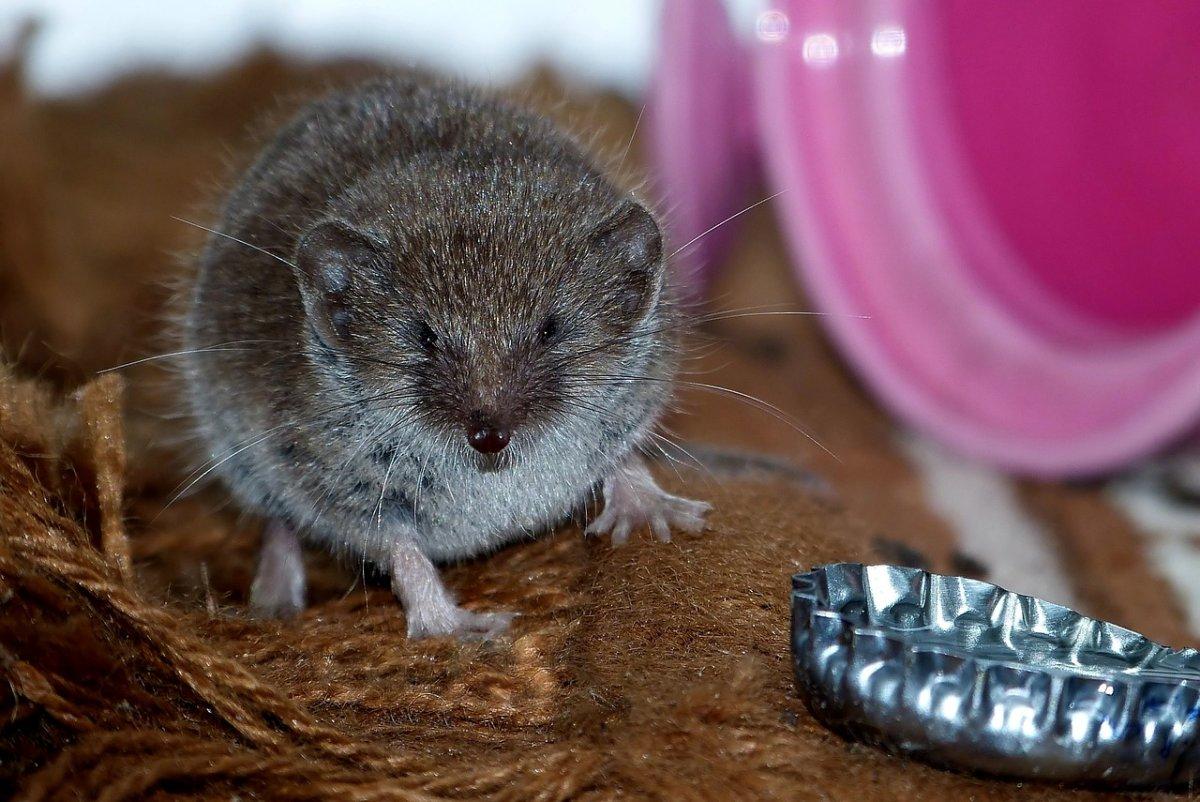
- Name: Iberian shrew
- Scientific name: Sorex granarius
- Conservation status:
The Iberian shrew, also known as the Lagranja shrew, is a species of mammal endemic to Portugal and Spain. The vast majority of its range is located in the westernmost Iberian Peninsula, but it can also be found in a narrow strip from the Atlantic coastline to central Spain.
It inhabits Galicia and the Tagus River in Spain. The main predators of this shrew are wild and domestic cats, as well as barn owls.
31. Osprey
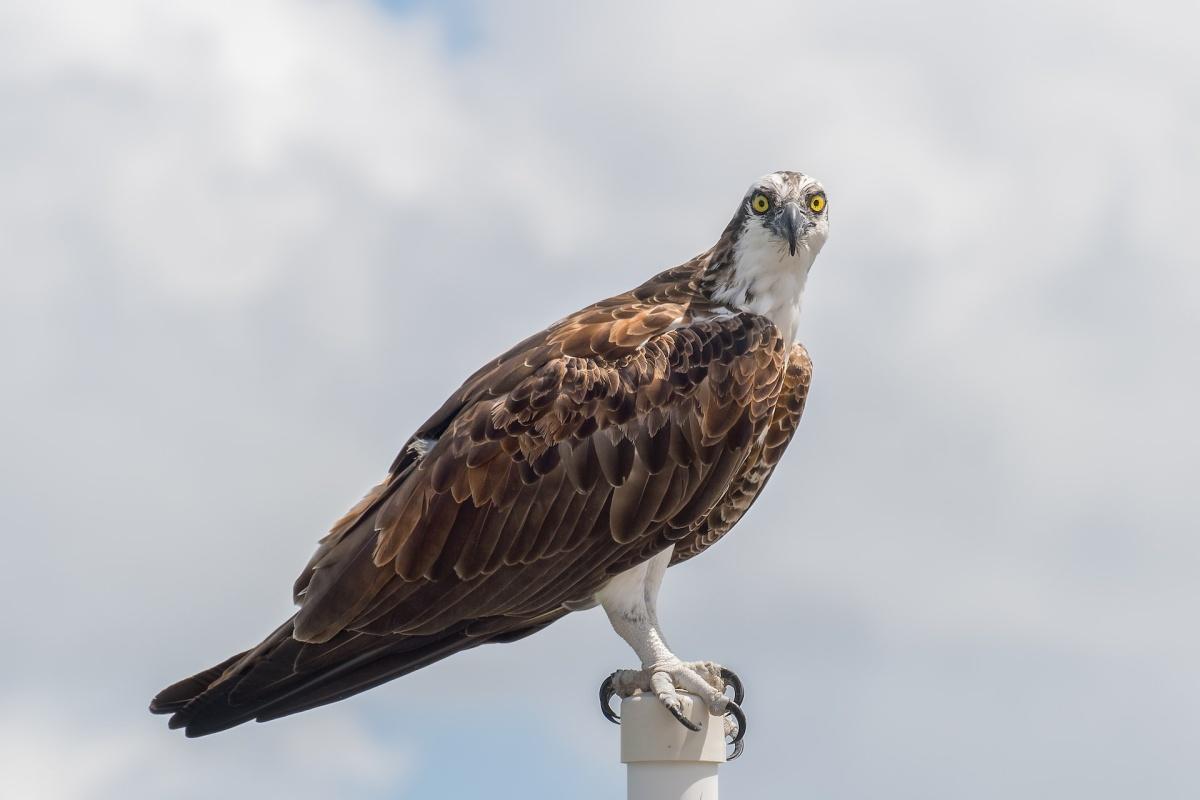
- Name: Osprey
- Scientific name: Pandion haliaetus
- Conservation status:
The osprey, also known as the fish hawk, the sea hawk, or the river hawk, is a large species of raptor found on the coastlines of the world, in almost every continent. It is the second-most wide-ranging raptor in the world after the peregrine falcon, and is a specialized fish hunter, as its names imply.
This bird of prey can close its nostril to keep out water during dives and has dense, oily plumage, ideal to prevent its feathers from getting completely soaked.
32. Eurasian beaver
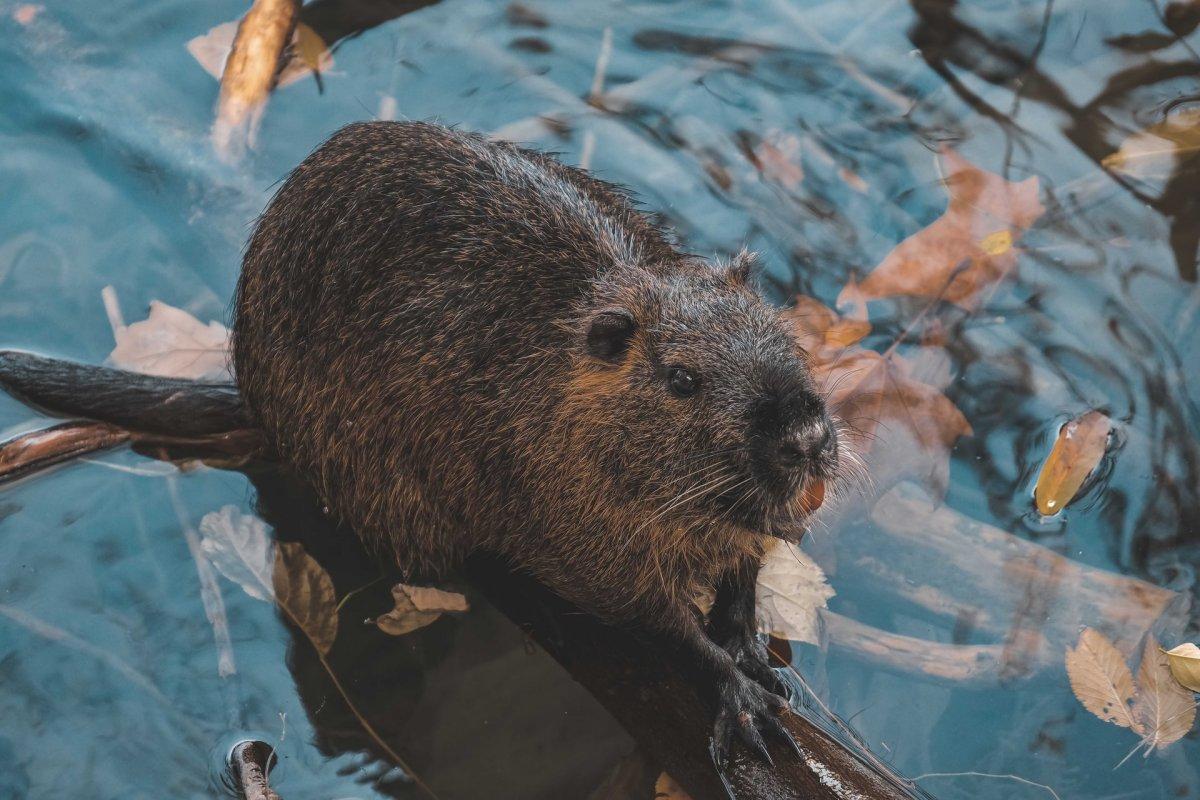
- Name: Eurasian beaver
- Scientific name: Castor fiber
- Conservation status:
The Eurasian beaver, also known as the European beaver, is a species of beaver found throughout Europe and into western and central Asia. After becoming near-extinct at the turn of the 20th century because of overhunting for its fur and castoreum, it has been reintroduced to much of its former range.
This beaver used to be widespread in Spain, but its numbers are now very low, and it is facing extirpation, just like in Portugal from which it is already locally extinct.
33. Eurasian spoonbill
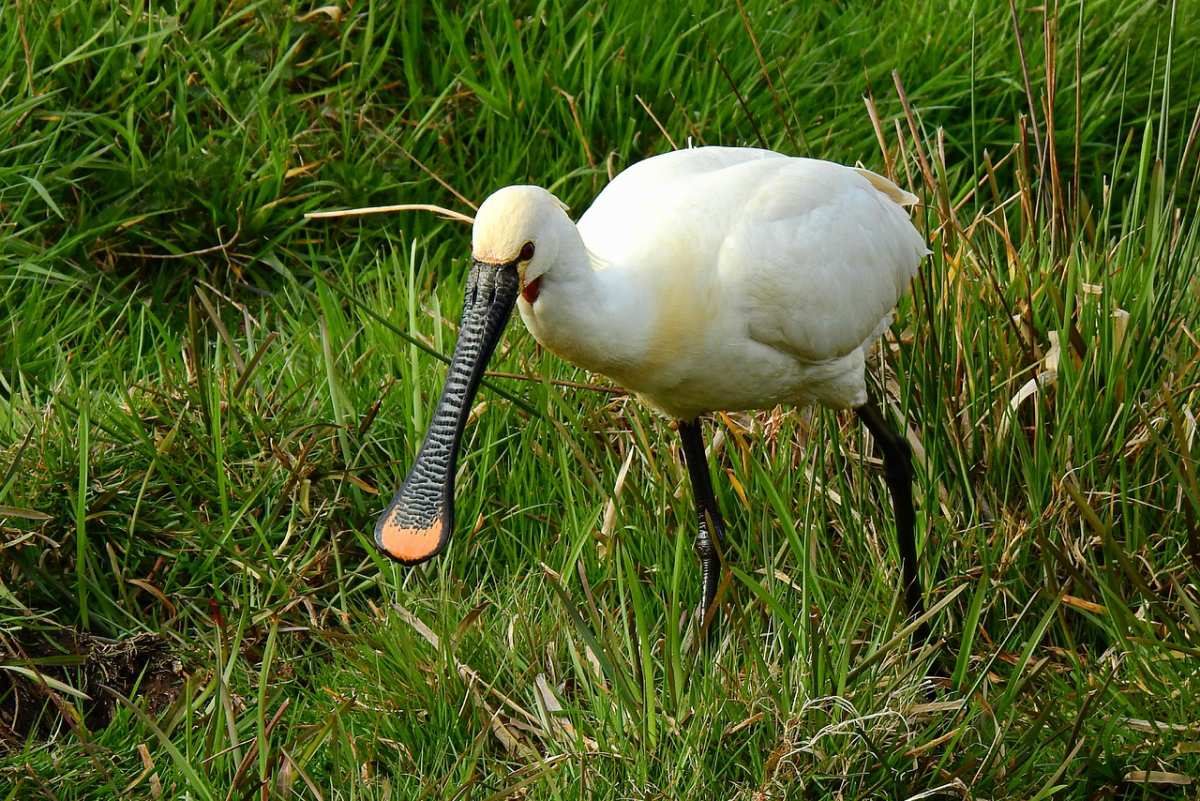
- Name: Eurasian spoonbill
- Scientific name: Platalea leucorodia
- Conservation status:
The Eurasian spoonbill, also known as the common spoonbill, is a large species of wading bird native to scattered spots across Europe. In Spain, it can be found near Barcelona, in the northeastern areas of the country, as well as next to the Portuguese border, in southwestern Spain.
Spain is one of the few European countries (alongside the Netherlands, Austria, Greece, and Hungary) to have a sizable breeding population.
—
So there you have them, these were my 33 native animals of Spain. I hope you enjoyed this list and that you learned something new today.
In case you want to learn more about the wild animals of Spain, feel free to keep reading, as I still have lots of things to tell you about:
Endangered Animals of Spain
This is definitely the saddest part of the list, but it is very important to raise awareness. Because of this, let’s go through the list of endangered animals in Spain.
Here are the animals in danger of extinction in Spain.
- Canarian oystercatcher
- Duckbill eagle ray
- North Atlantic right whale
- Atlantic sturgeon
- Tenerife speckled lizard
- La Gomera giant lizard
- and 28 more…
- Northern bald ibis
- Iberian lynx
- Mallorcan midwife toad
- Mediterranean monk seal
- Baetican killifish
- and 53 more…
To see the full list of endangered species in Spain, head over to the International Union for Conservation of Nature’s Red List.
What is the National Animal of Spain?
The national animal of Spain is the bull.
Don’t tell me you have never heard of bullfighting, I won’t trust you!
Bullfighting is one of the most well-known and historical traditions of Spain. It has spread to several other countries, mainly ancient colonies such as Mexico, and is considered a sport in which a torero dances around and fights with a bull, spearing it slowly but steadily. Nowadays, this practice is becoming more and more controversial, but it remains a particularly important emblem of Spain.
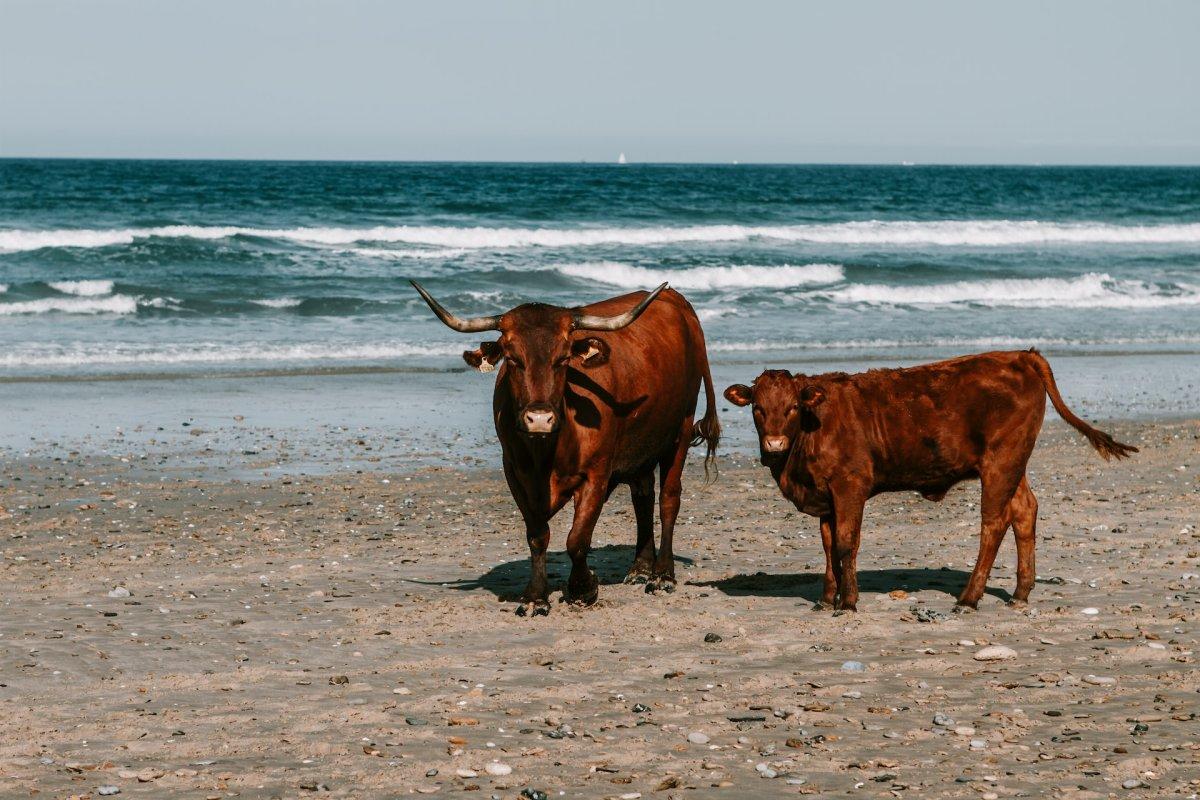
How Many Animals Native to Spain?
What is the diversity of native animals in Spain?
Let’s look at the total number of species of Chordata (mammals, birds, fishes, and reptiles).
Total number of animal species in Spain: 1,957 (3,149 in total in Europe)
More About Animals in the World!
Loved these Spain animal facts? Want to see what animals live in other countries?
Then check out these posts:
Or click here to see ALL the facts up on the blog! Spoiler alert: there’s A LOT of them.
Share the knowledge! Click on the buttons below to share information about these famous animals in Spain with your friends, and help them learn more about the world 🙂
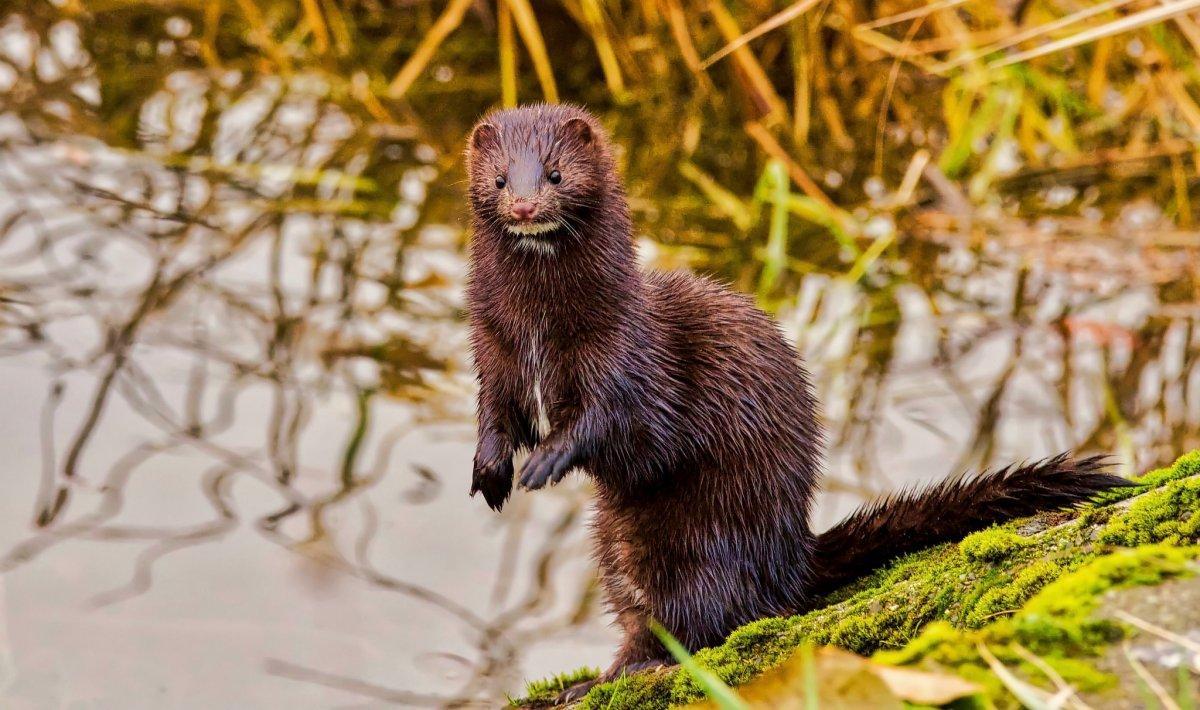
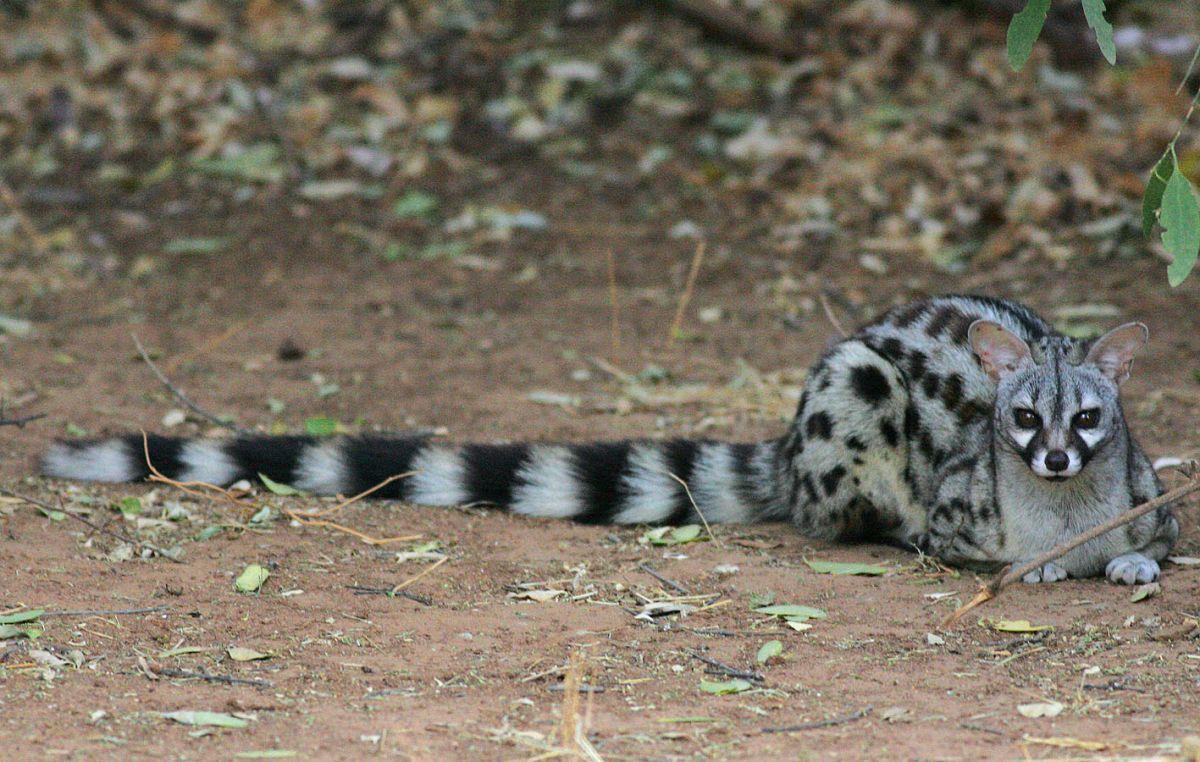
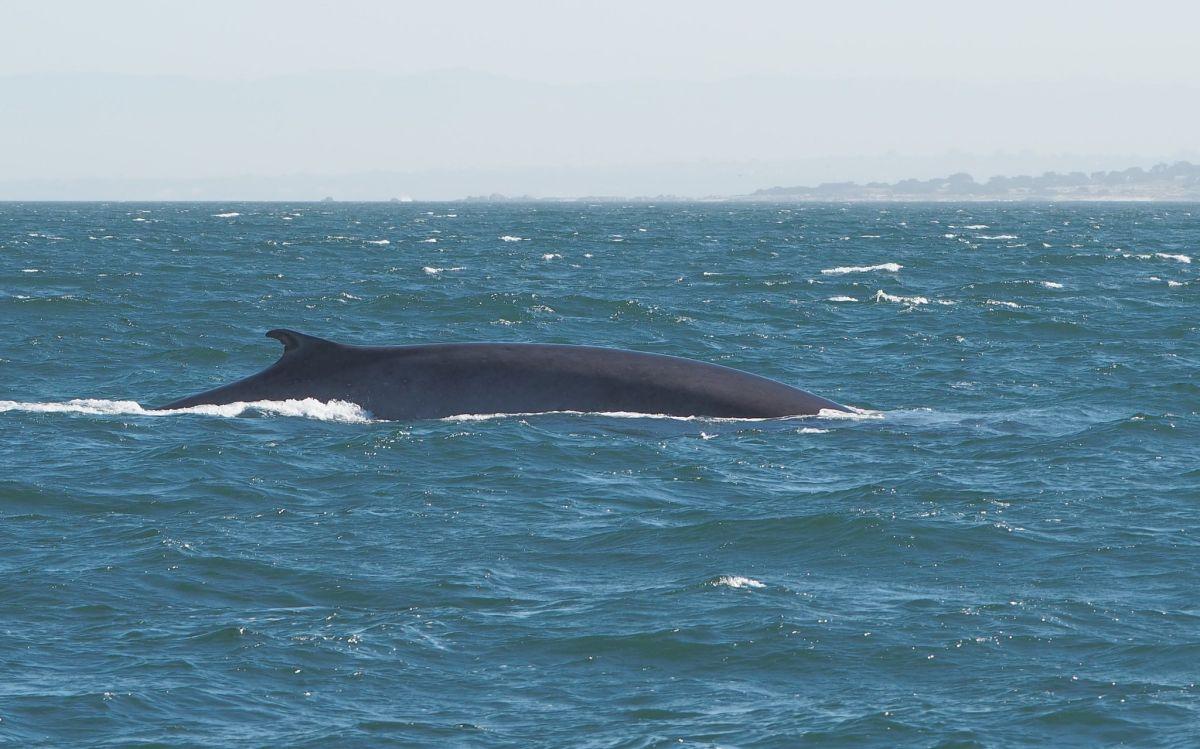
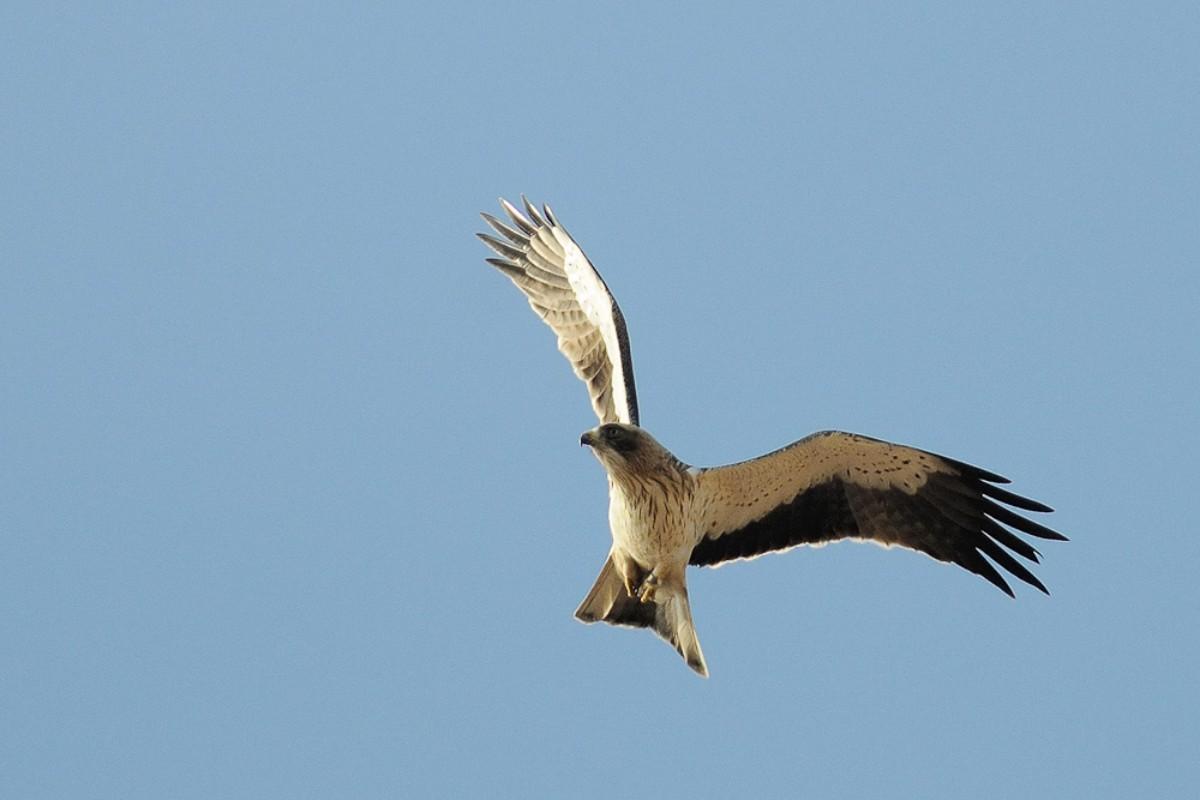
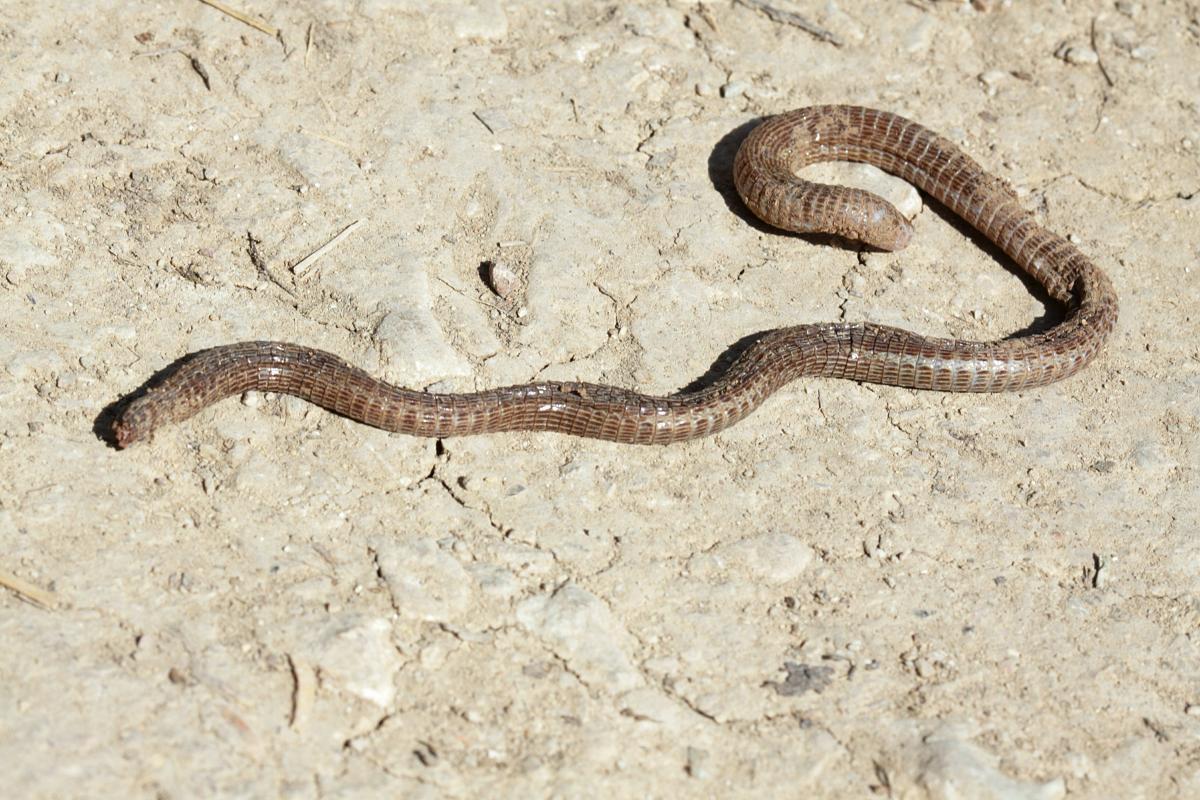
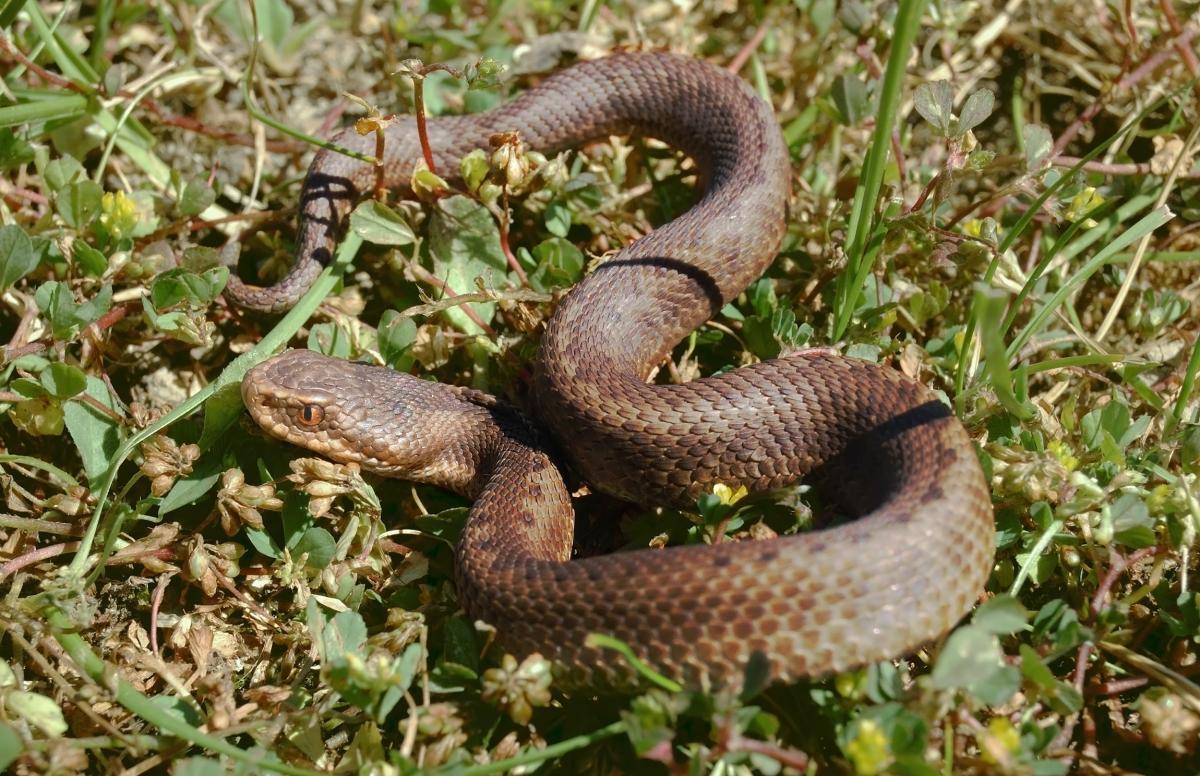
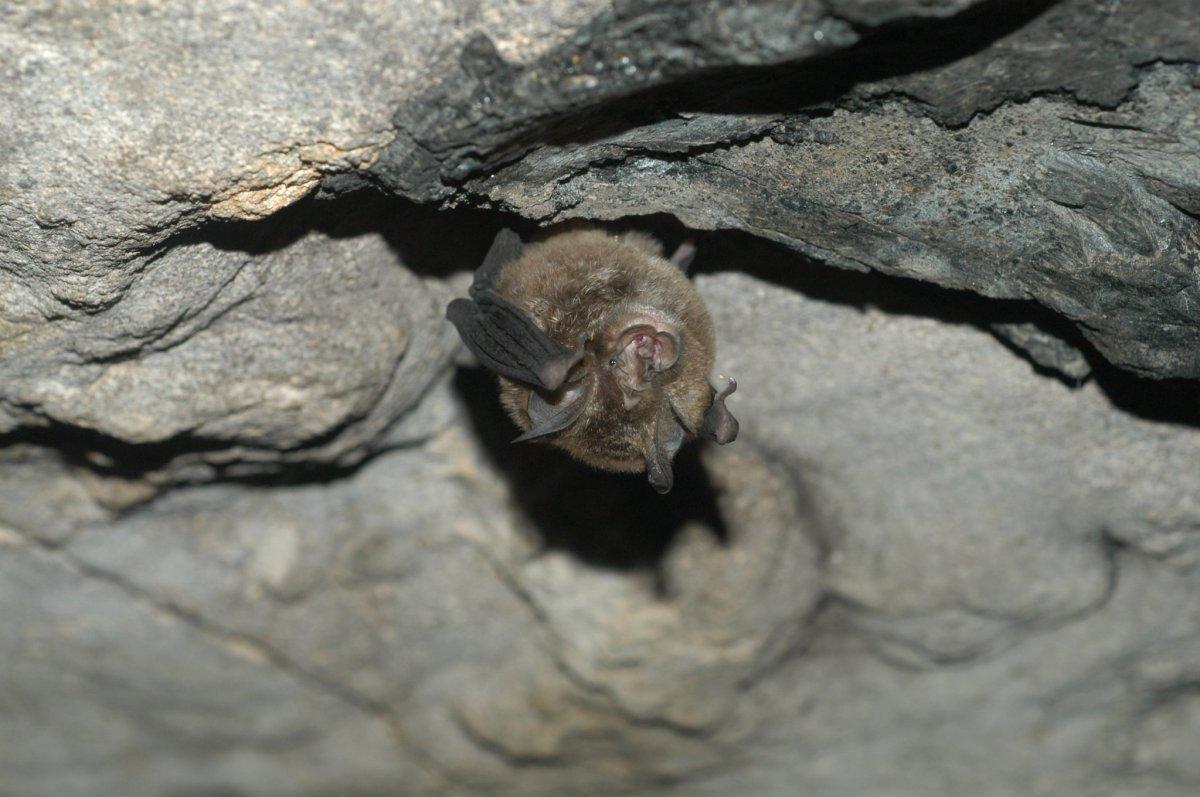

![18 Wild Animals in the Netherlands [Wildlife in the Netherlands]](https://www.kevmrc.com/wp-content/uploads/2022/06/18-wild-animals-in-the-netherlands.jpg)
![13 Wild Animals in Vanuatu [Wildlife in Vanuatu]](https://www.kevmrc.com/wp-content/uploads/2023/01/13-wild-animals-in-vanuatu.jpg)
![18 Wild Animals in El Salvador [Wildlife in El Salvador]](https://www.kevmrc.com/wp-content/uploads/2022/08/18-wild-animals-in-el-salvador.jpg)